PAINTING
Anthony Burton OBE (Fragment LXVI)

Anthropic XIII
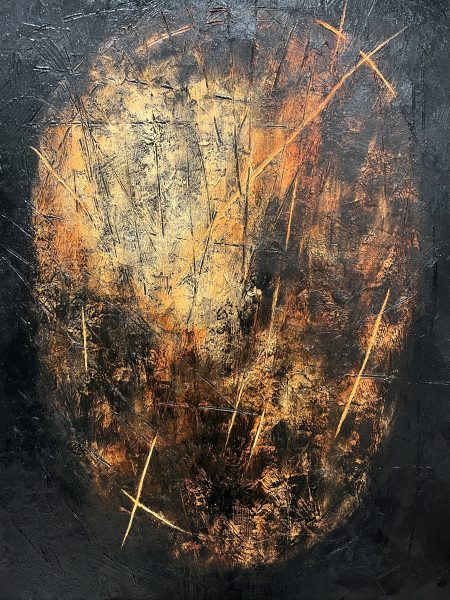
Anthropic XII
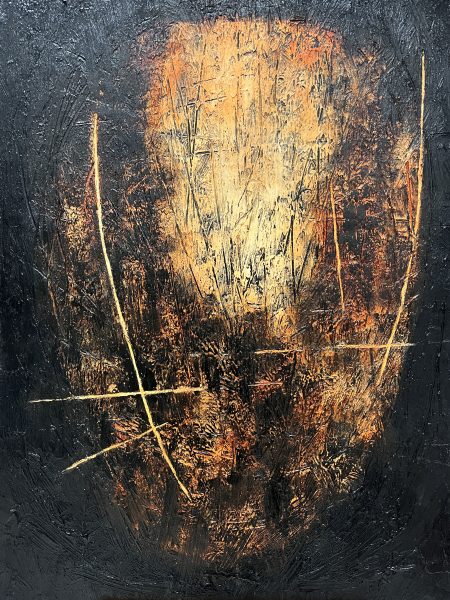
Anthropic XI
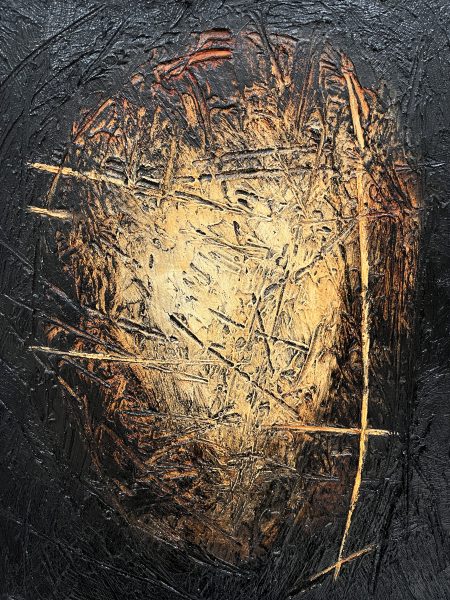
Anthropic I
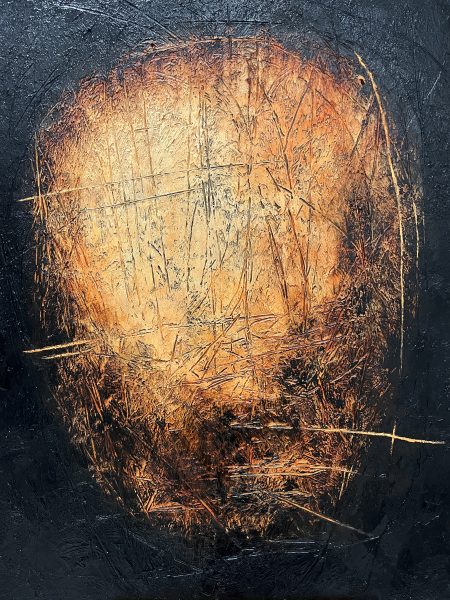
Psyche XXVI
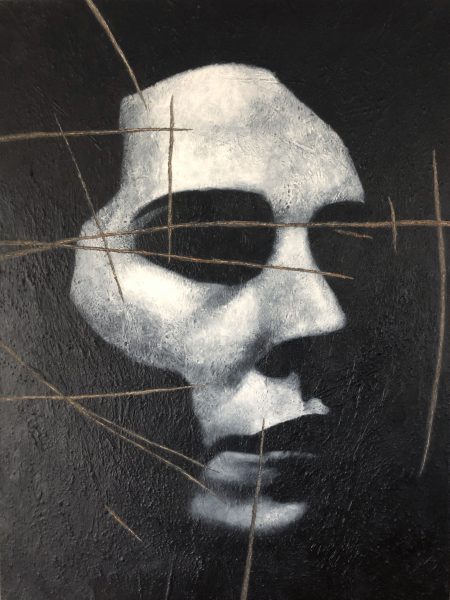
Psyche XXIII
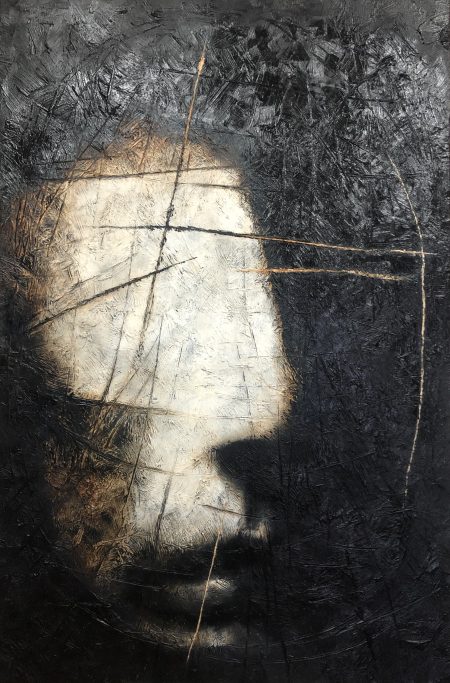
Psyche XXI
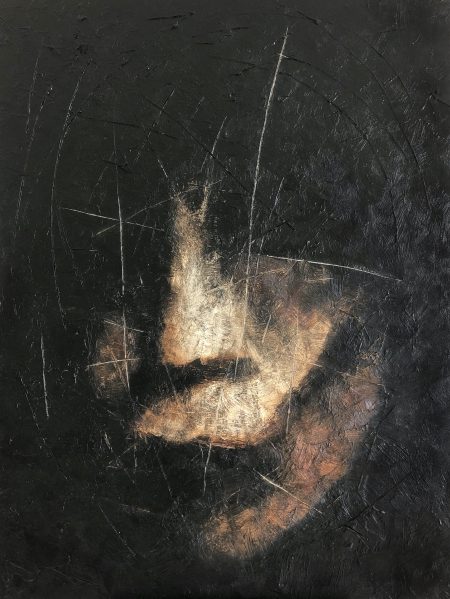
Psyche XX
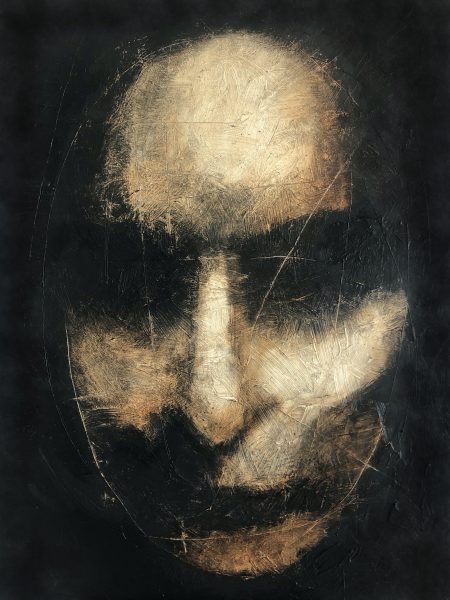
Psyche XIX
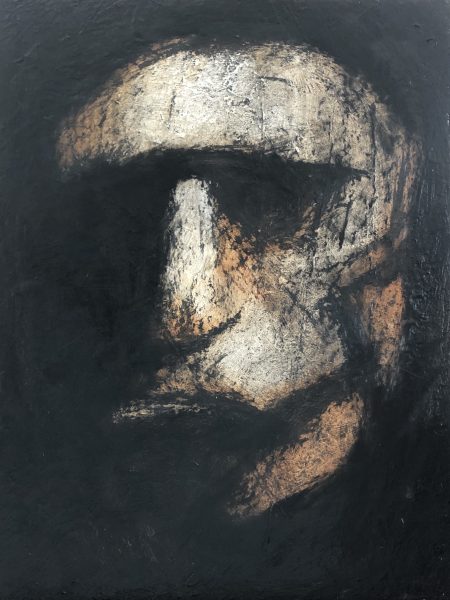
Psyche XVIII
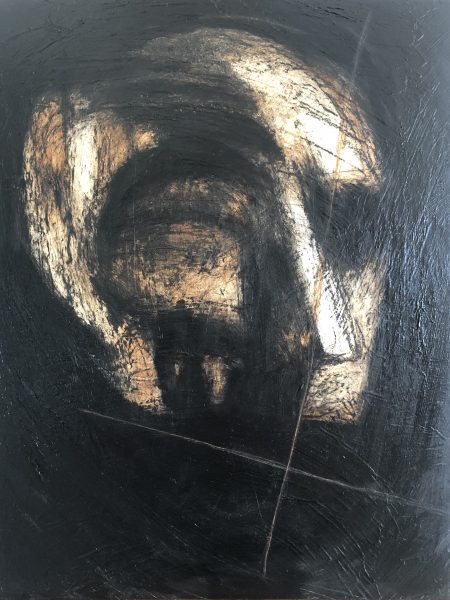
Psyche XVII
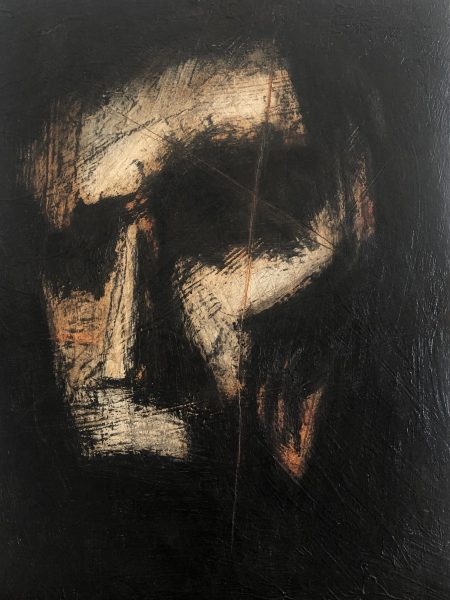
Psyche XVI
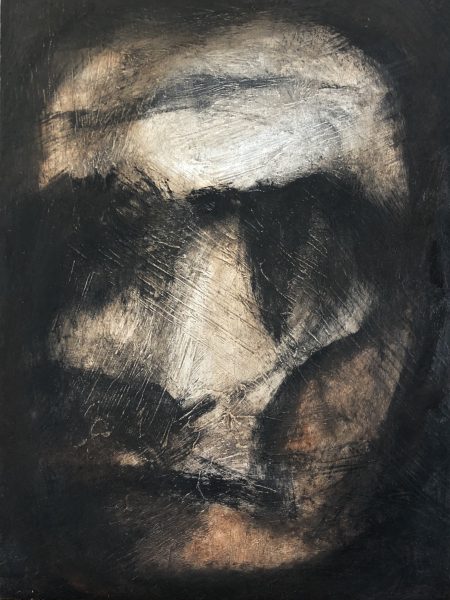
Professor Jo Martin (Fragment LXIV)

Fragment LX
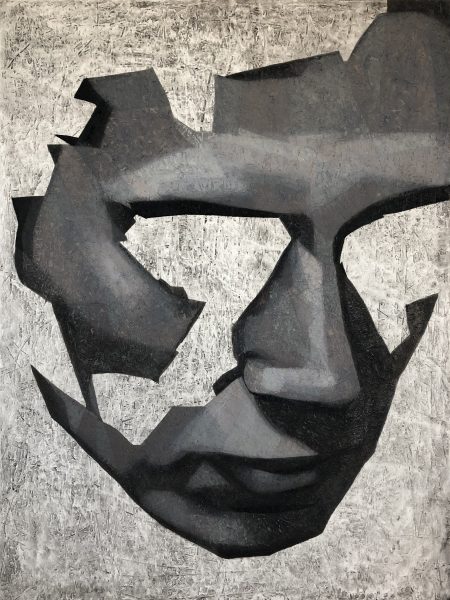
Fragment LV
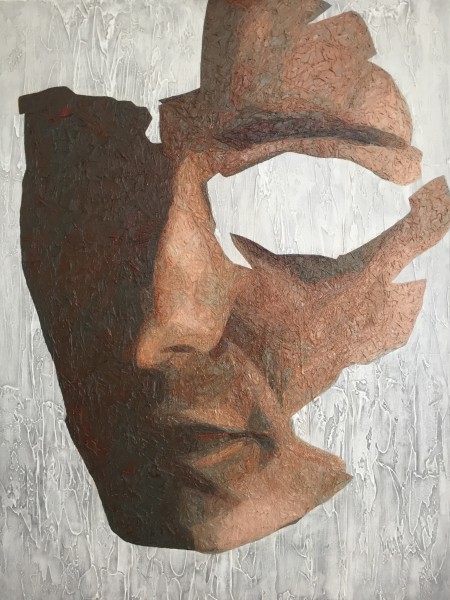
Fragment LIV
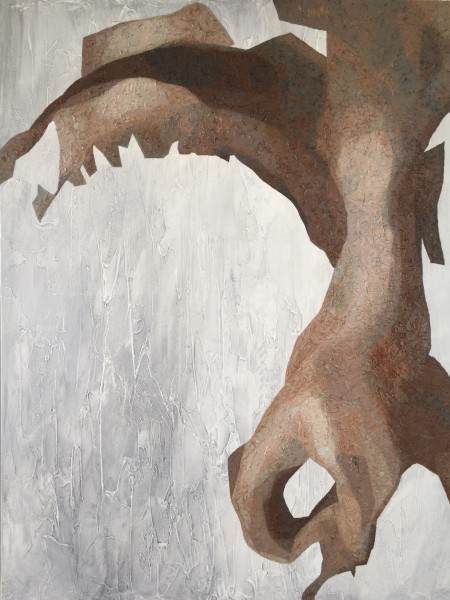
Fragment LII
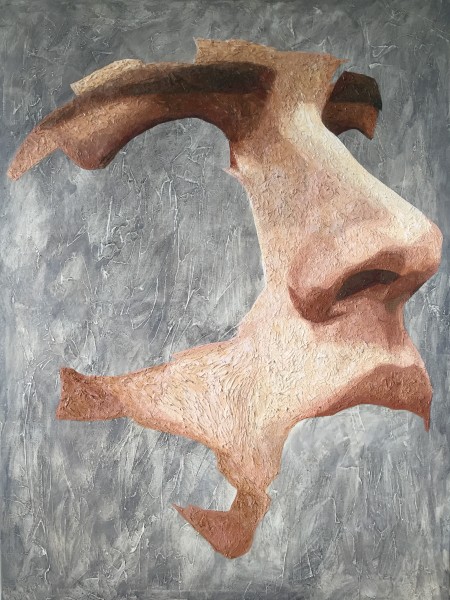
Fragment L
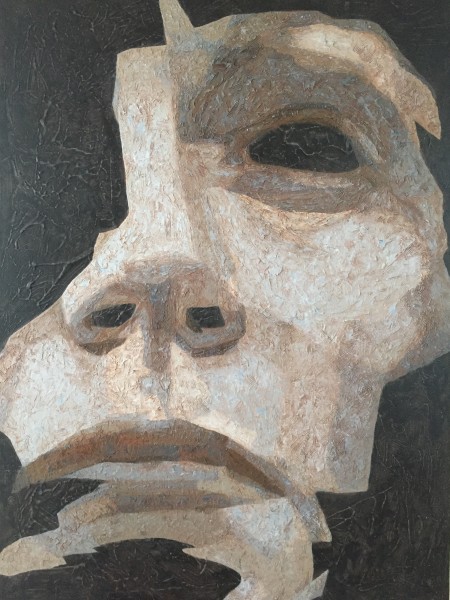
Fragment XLIX
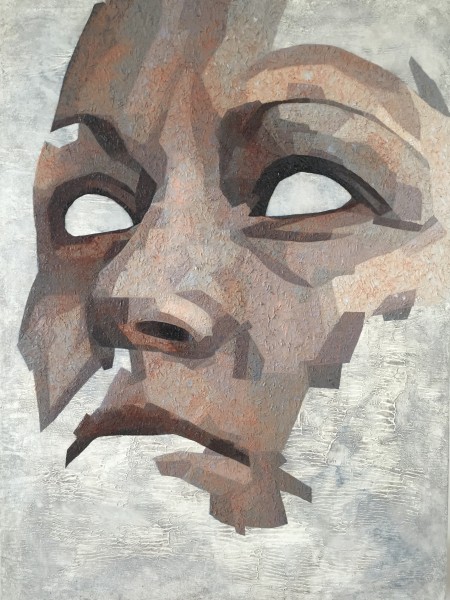
Fragment XLVIII
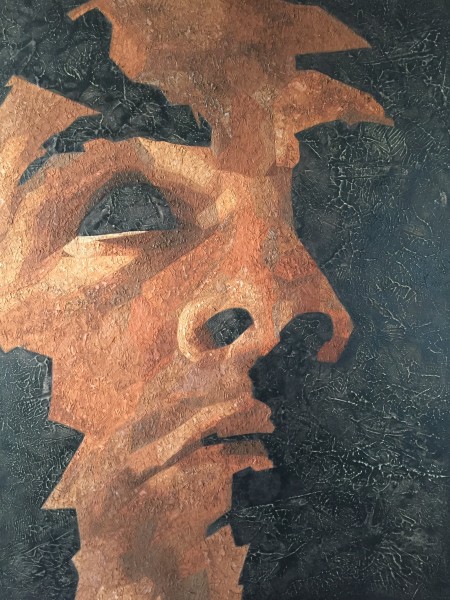
Fragment XLVII
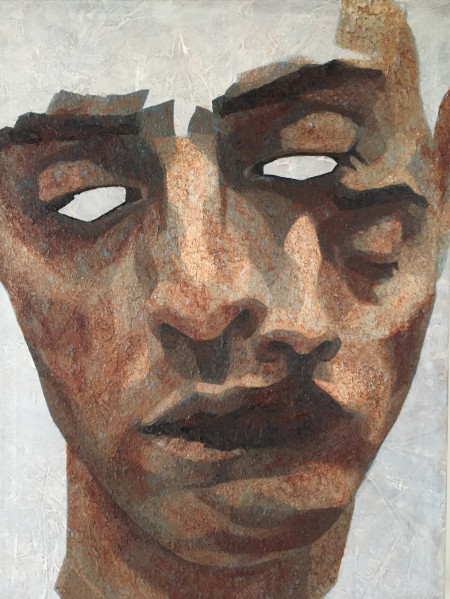
Fragment XLVI
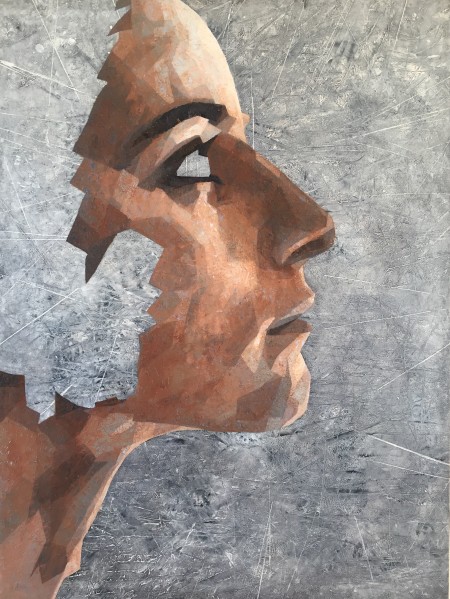
Fragment XLII
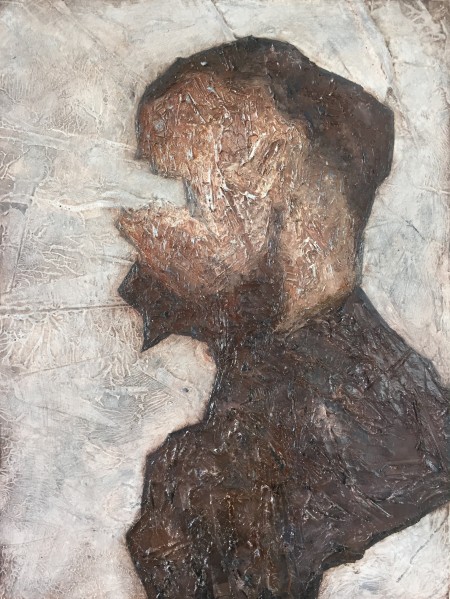
Fragment XL
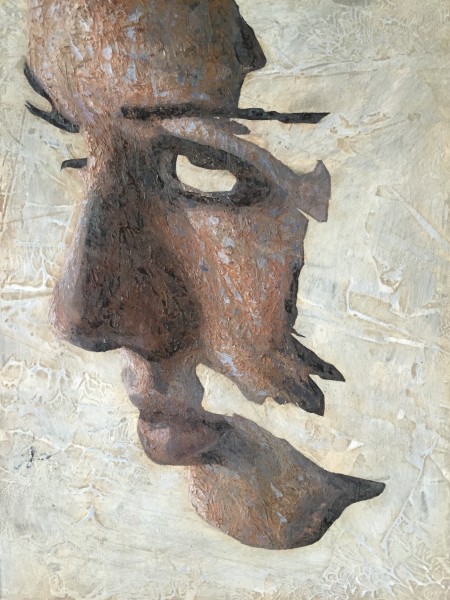
Fragment XXXIX
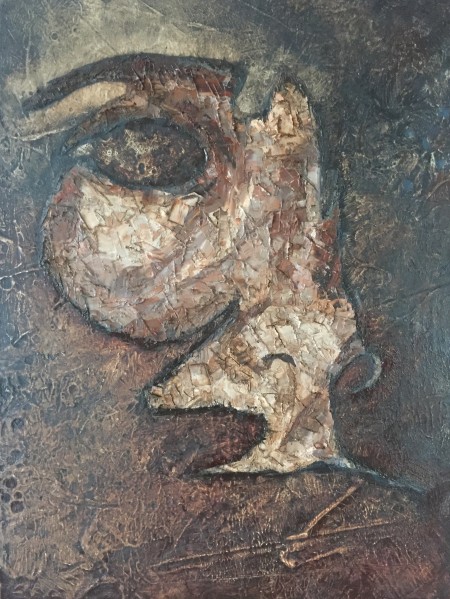
Fragment XXXVIII
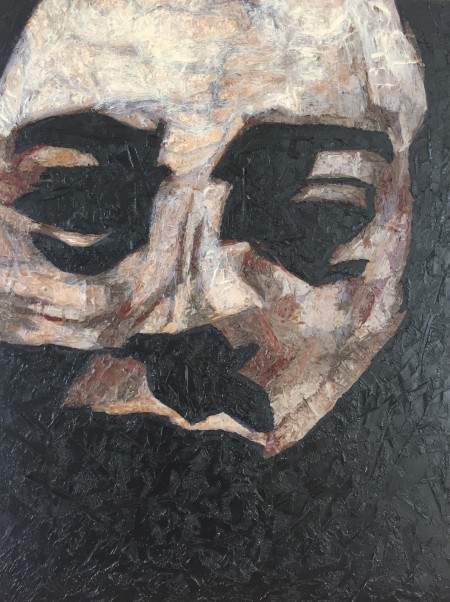
Fragment XXXIV
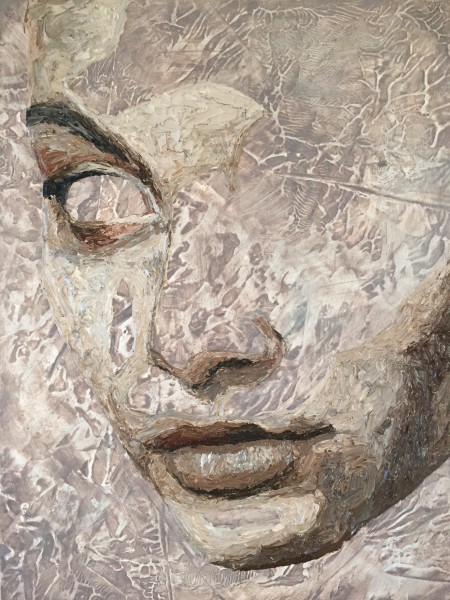
Fragment XXXIII
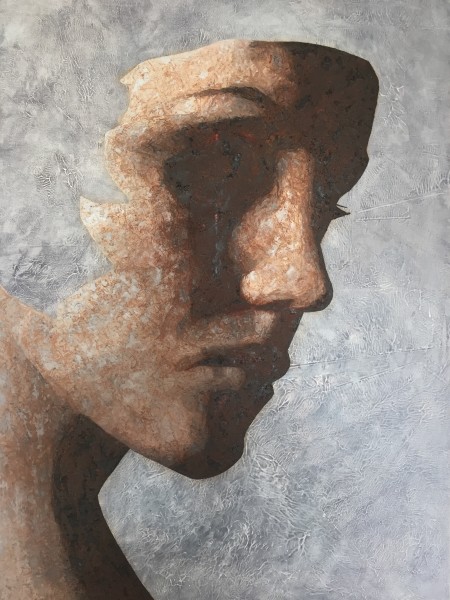
Fragment XXXII
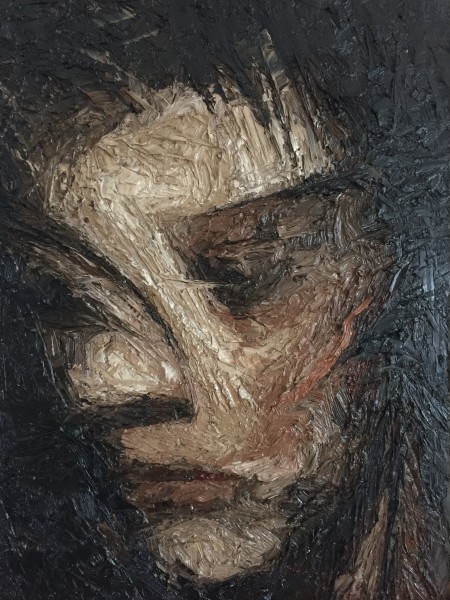
Fragment XXXI
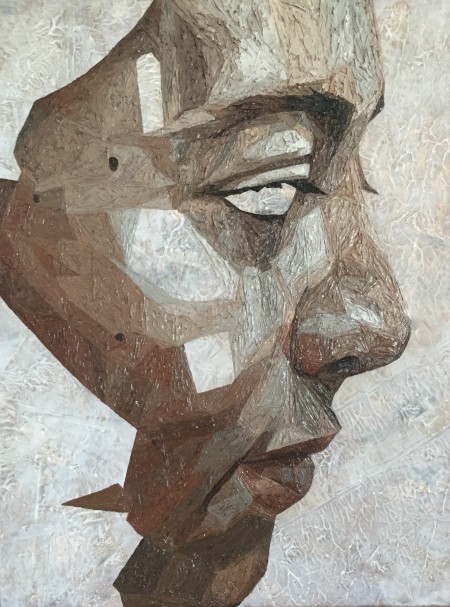
Fragment XXX
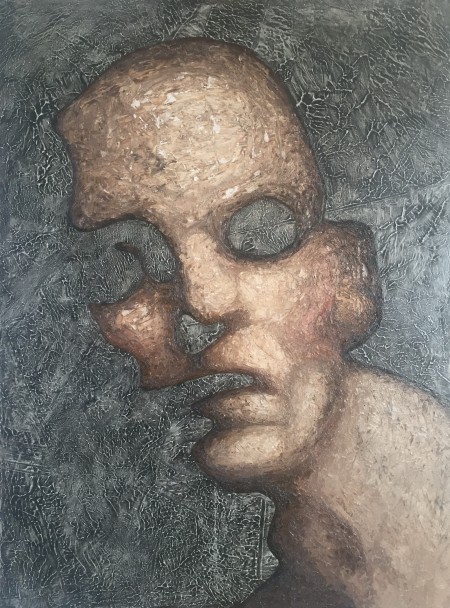
Fragment XXIX
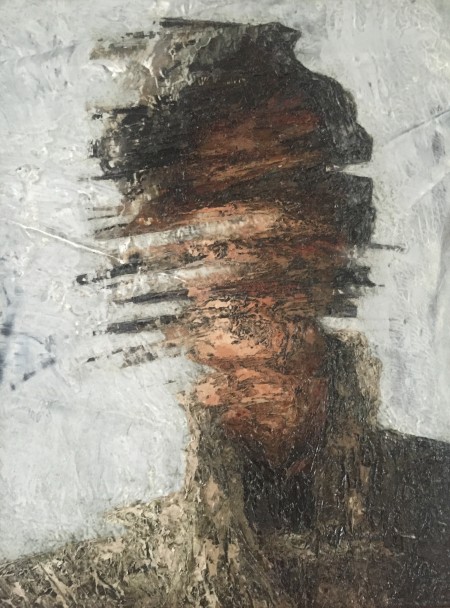
Fragment XXVIII
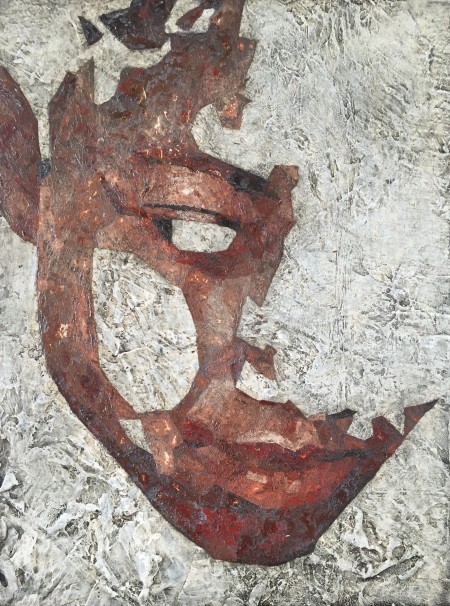
Fragment XXVII

Fragment XXVI
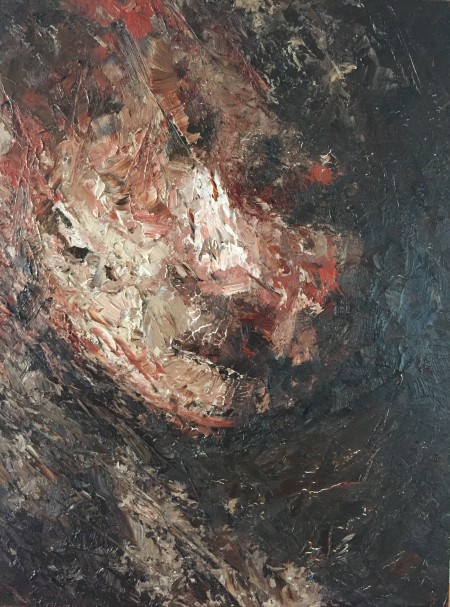
Fragment XXIV
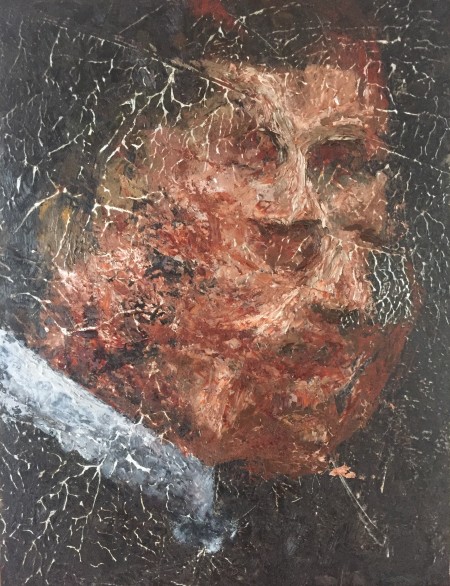
Fragment XXI
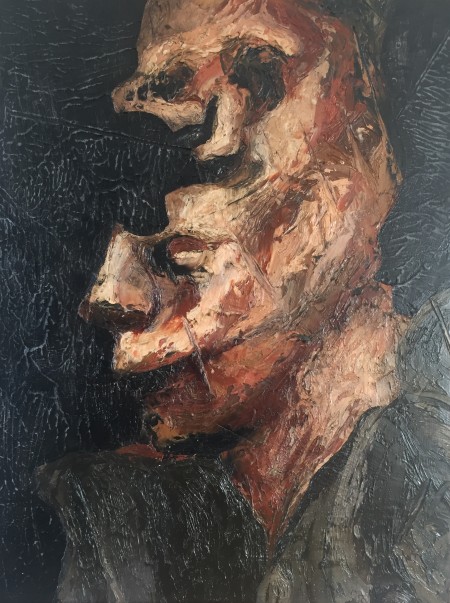
Fragment XIX
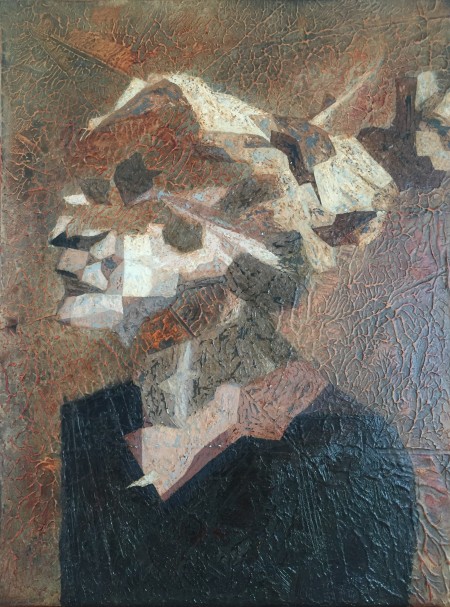
Fragment XVII
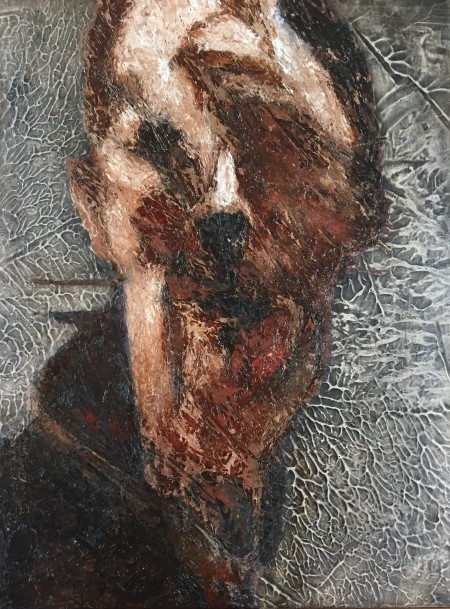
Fragment XV
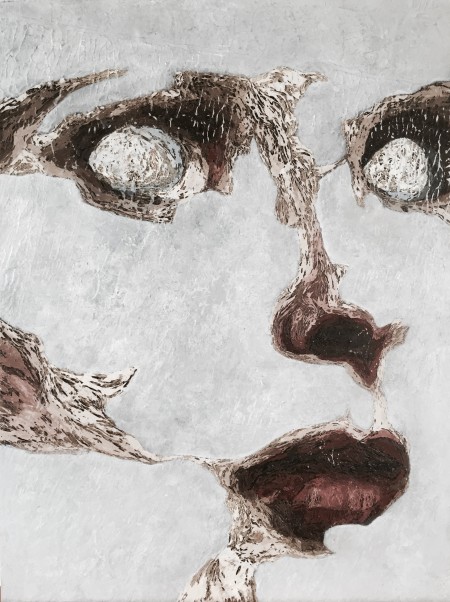
Fragment XIV
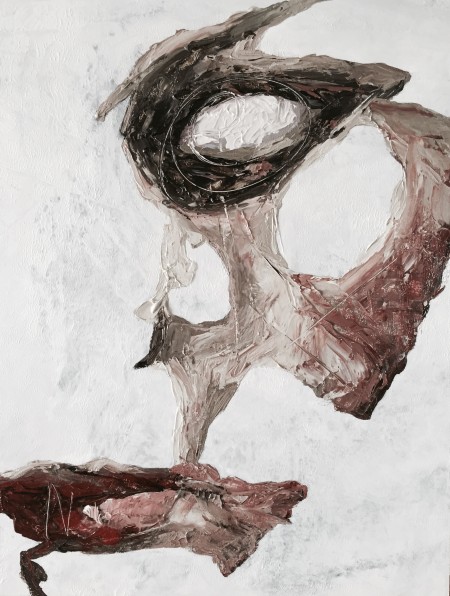
Fragment V
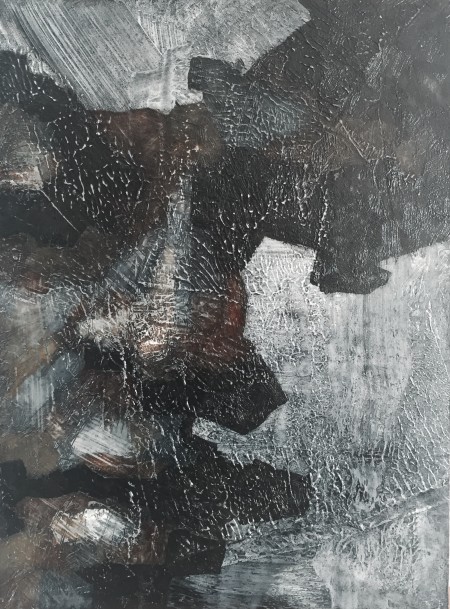
Fragment II
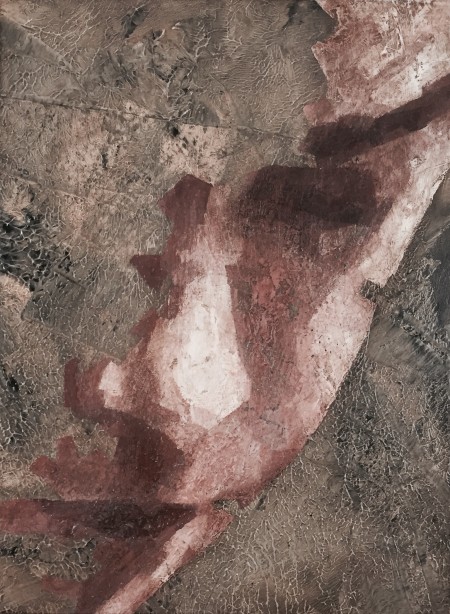
Fragment I


Anthony Burton OBE (Fragment LXVI)
Anthony Burton OBE (Fragment LXVI) – Acrylic and oil on board – 100x75cm
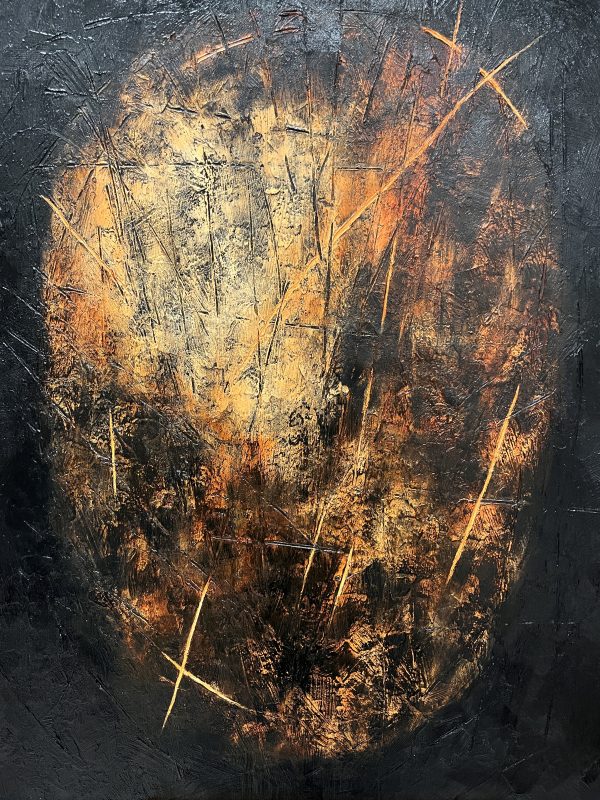
Anthropic XIII
Anthropic XIII – Acrylic & Oil on Board – 100x75cm
Anthropic
adjective
(in philosophy and cosmology) involving or concerning the existence of human life, especially as a constraint on the theories of the universe.
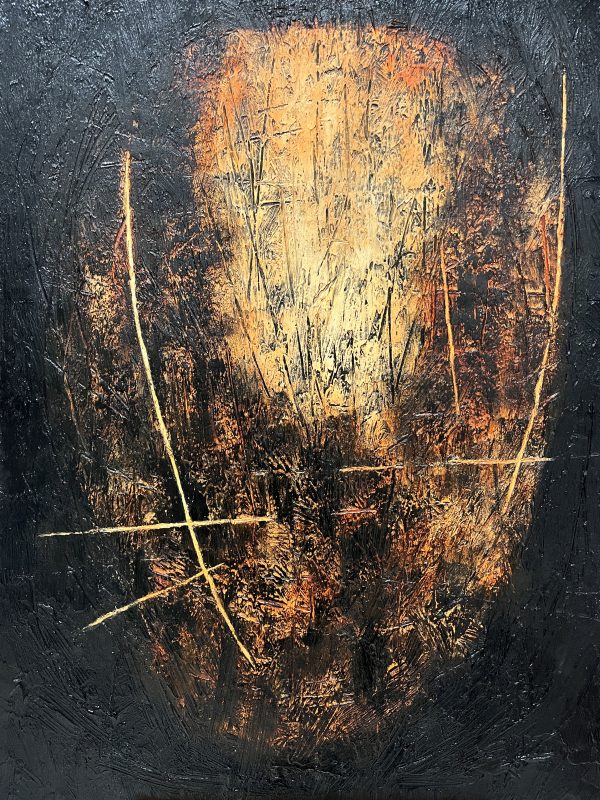
Anthropic XII
Anthropic XII – Acrylic & Oil on Board – 100x75cm
Anthropic
adjective
(in philosophy and cosmology) involving or concerning the existence of human life, especially as a constraint on the theories of the universe.
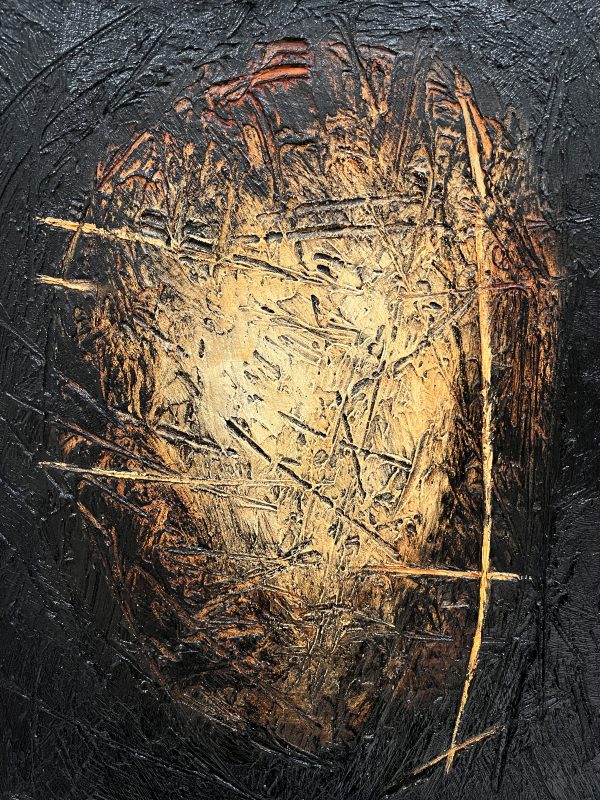
Anthropic XI
Anthropic XI – Acrylic & Oil on Board – 40x30cm
Anthropic
adjective
(in philosophy and cosmology) involving or concerning the existence of human life, especially as a constraint on the theories of the universe.
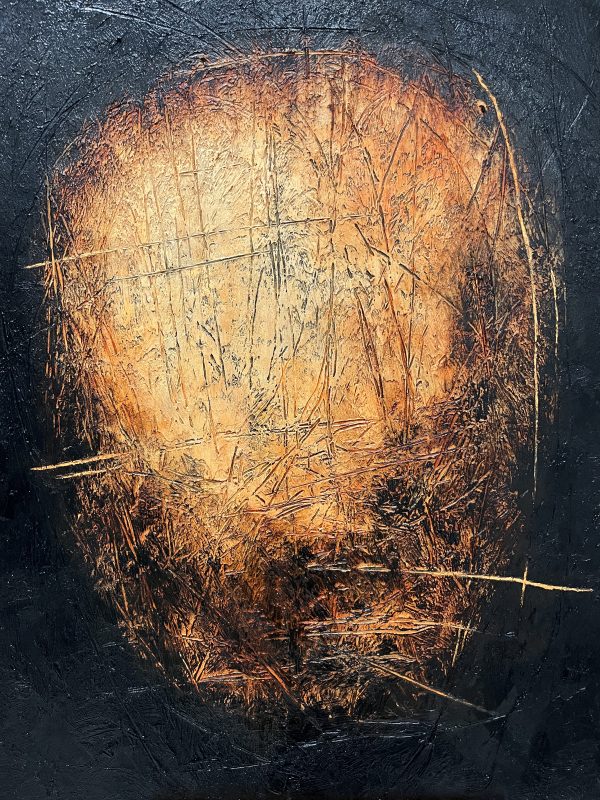
Anthropic I
Anthropic I – Acrylic & Oil on Board – 100x75cm
Anthropic
adjective
(in philosophy and cosmology) involving or concerning the existence of human life, especially as a constraint on the theories of the universe.

Psyche XXVI
“Psyche XXVI” Oil on canvas, 120x90cm
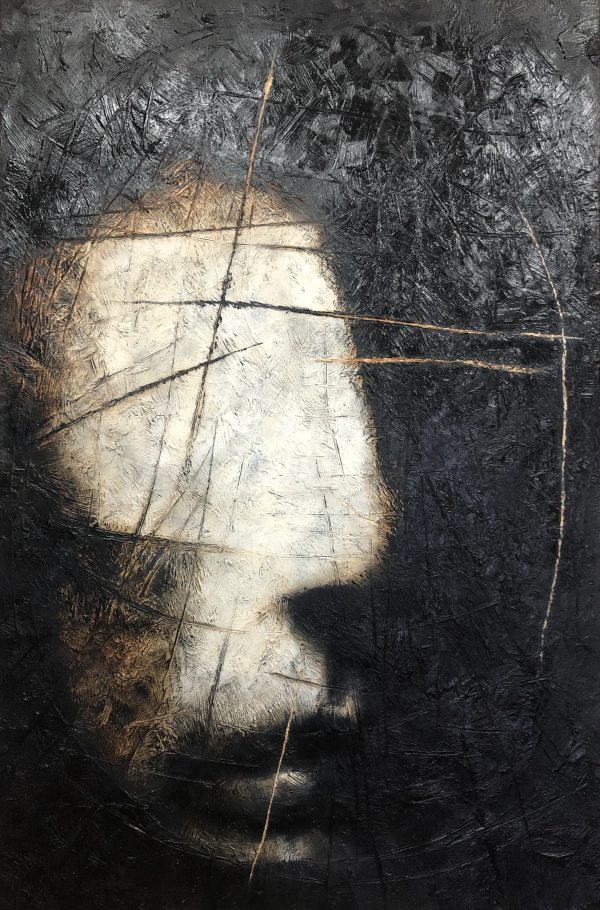
Psyche XXIII
“Psyche XXIII” Oil on canvas, 150x100cm
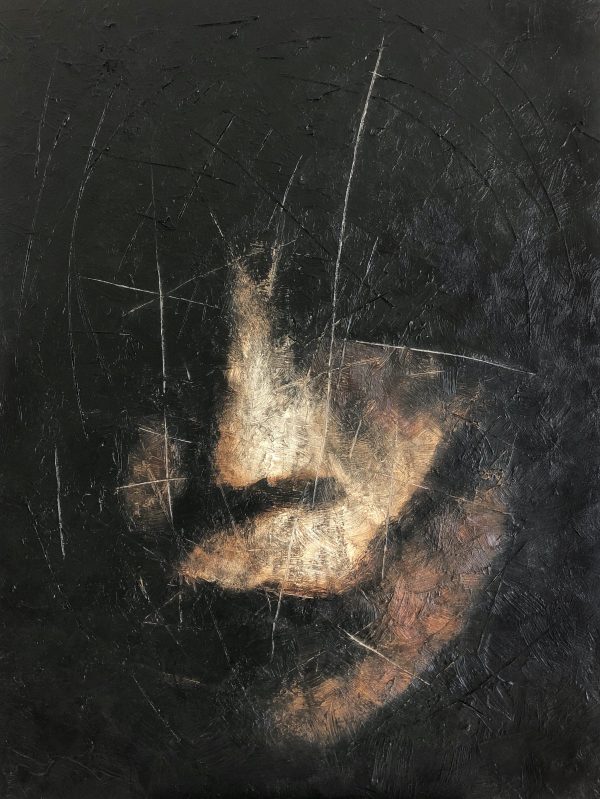
Psyche XXI
“Psyche XXI” Oil on canvas, 120x90cm
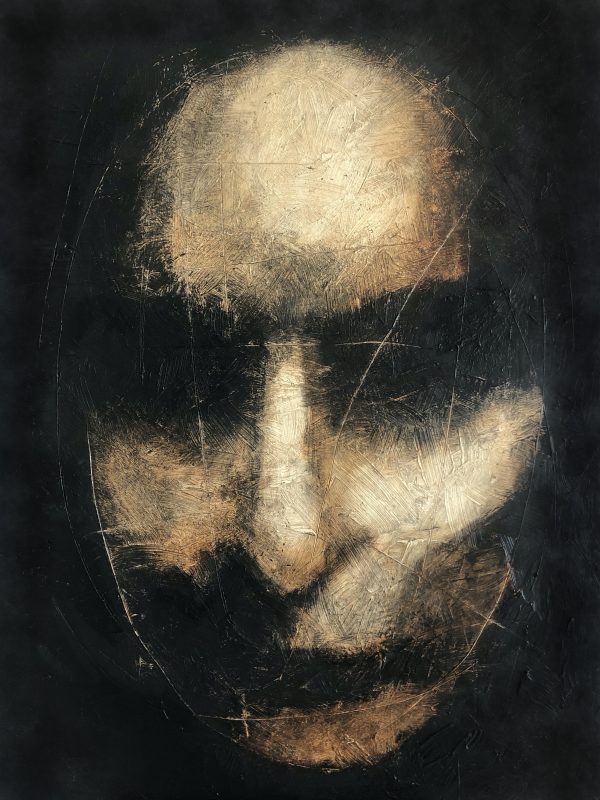
Psyche XX
“Psyche XX” Oil & charcoal on canvas, 120x90cm
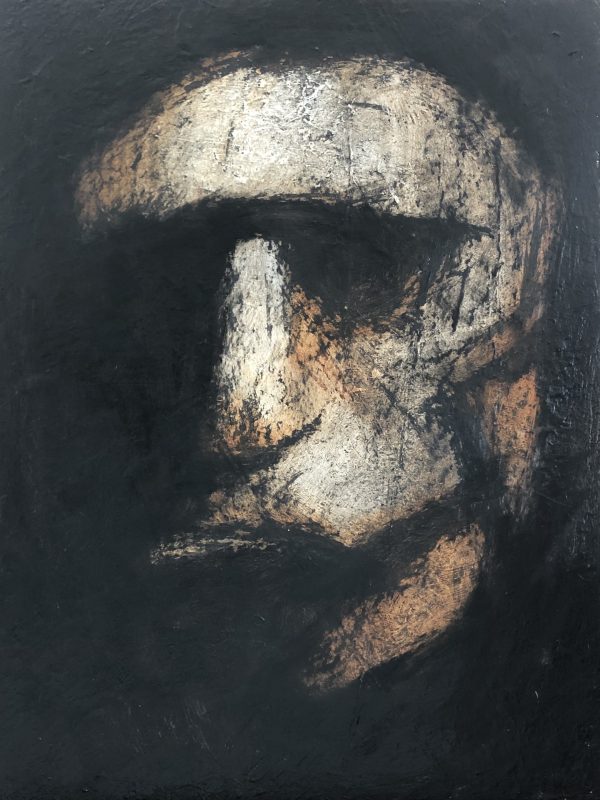
Psyche XIX
“Psyche XIX” Acrylic, Charcoal & oil on board, 40x30cm
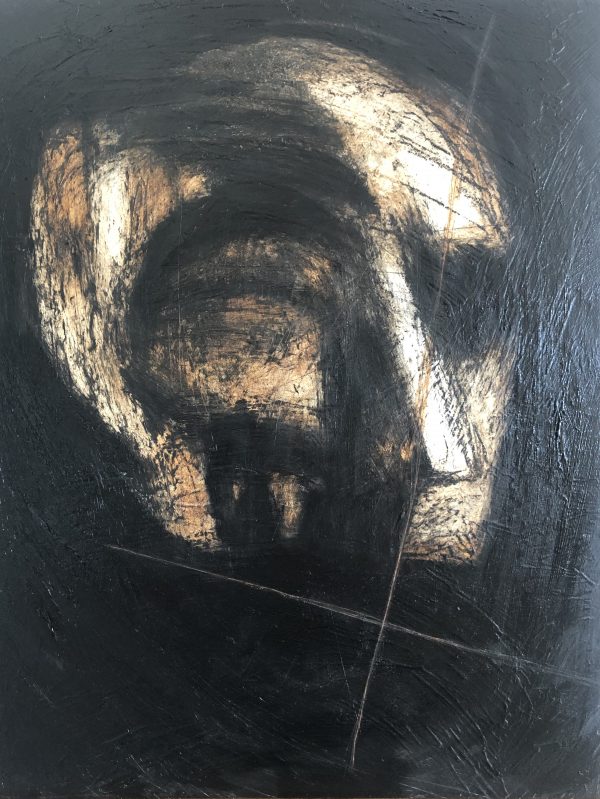
Psyche XVIII
“Psyche XVIII” Acrylic, Charcoal & oil on board, 40x30cm
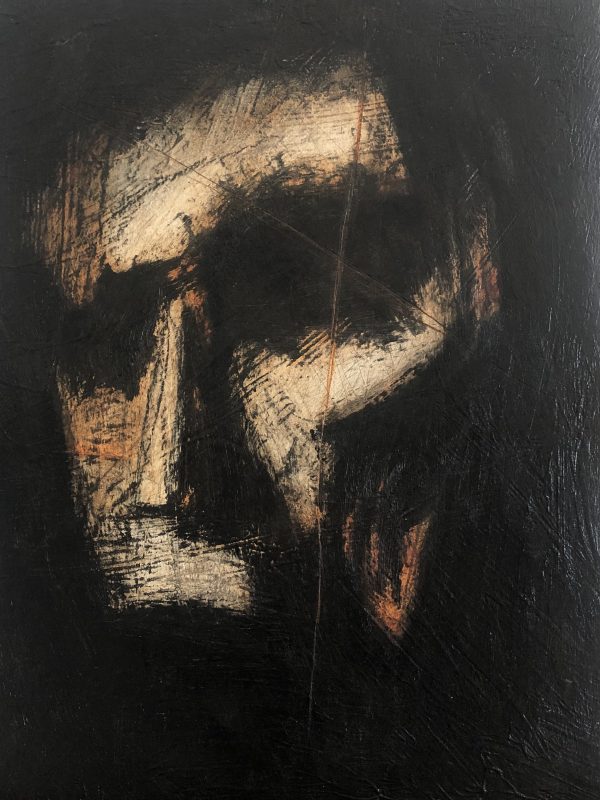
Psyche XVII
“Psyche XVII” Acrylic, Charcoal & oil on board, 40x30cm
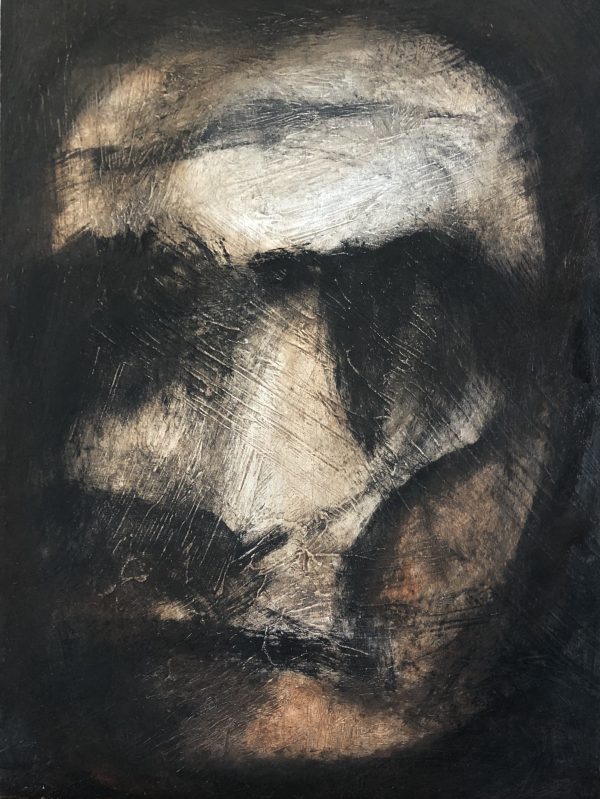
Psyche XVI
“Psyche XVI” Acrylic & oil on board, 40x30cm

Professor Jo Martin (Fragment LXIV)
Professor Jo Martin CBE, President of the Royal College of Pathologists (Fragment LXIV), oil on canvas, 100x75cm – commissioned portrait.
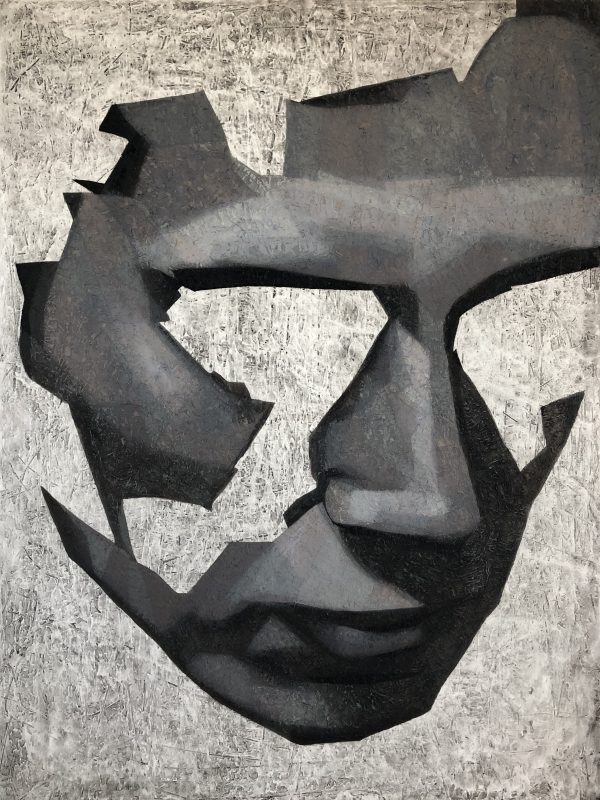
Fragment LX
“Fragment LX” – Oil on Canvas, 100x75cm.
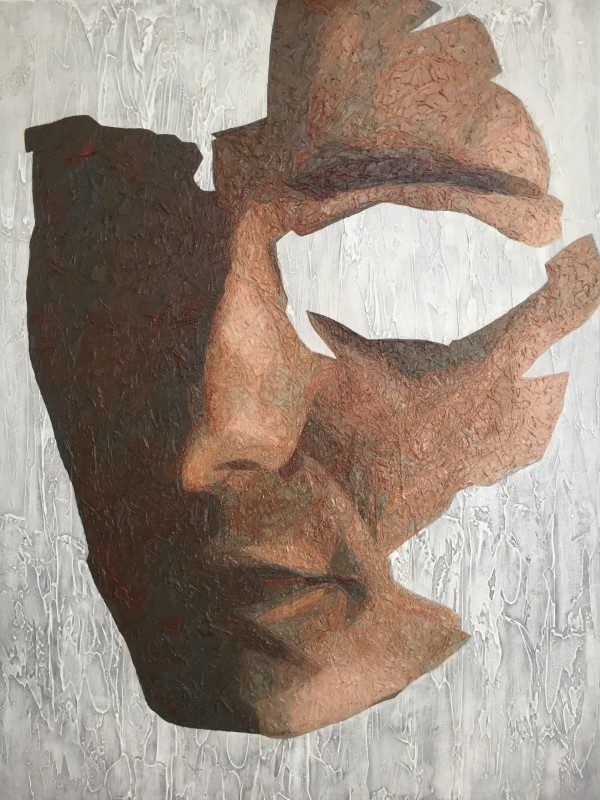
Fragment LV
“Fragment LV” – Oil on canvas, 100x75cm.
The Fragments series attempts, by the deconstruction of the portrait, to explore what lies beyond the physical and the individual, to discover what is essentially and universally human.
If we strip-away all that is unnecessary for our existence we would be left with nothing but the earth we stand on, and so the landscape is an integral part of this work. From the textures of rock and bark and the restricted palette of earth colours, to the vigorous technique of scraping the painted and sculpted surface with sandpaper and knives calling to mind the processes of erosion and corrosion, these figures are inseparable from their environment.
I’m not a traditional portrait artist, I’m not trying to describe a certain person, rather I’m interested in humanity in general, therefore very few of my paintings and sculptures include eyes, which would immediately tie the work to an individual.
The portrait is further abstracted, sometimes with a sense of fluidity, examining the effect of motion on the face, other times in a geometric fashion, suggestive of the broken reclics of ancient civilisations. However, by ensuring that the subject has a sense of volume, weight and substance, I hope that what is revealed by deconstructing the portrait might be just as tangible.
The viewer is encouraged to look beyond the surface features, to continue the process of stripping-away the unnecessary and consider ideas of mental health, identity, spirituality, the soul and our connection with the earth. The fragmentation of the portrait is sometimes uncomfortable because it deals with the fragility of existence.

Fragment LIV
“Fragment LIV” – Oil on canvas, 100x75cm.
The Fragments series attempts, by the deconstruction of the portrait, to explore what lies beyond the physical and the individual, to discover what is essentially and universally human.
If we strip-away all that is unnecessary for our existence we would be left with nothing but the earth we stand on, and so the landscape is an integral part of this work. From the textures of rock and bark and the restricted palette of earth colours, to the vigorous technique of scraping the painted and sculpted surface with sandpaper and knives calling to mind the processes of erosion and corrosion, these figures are inseparable from their environment.
I’m not a traditional portrait artist, I’m not trying to describe a certain person, rather I’m interested in humanity in general, therefore very few of my paintings and sculptures include eyes, which would immediately tie the work to an individual.
The portrait is further abstracted, sometimes with a sense of fluidity, examining the effect of motion on the face, other times in a geometric fashion, suggestive of the broken reclics of ancient civilisations. However, by ensuring that the subject has a sense of volume, weight and substance, I hope that what is revealed by deconstructing the portrait might be just as tangible.
The viewer is encouraged to look beyond the surface features, to continue the process of stripping-away the unnecessary and consider ideas of mental health, identity, spirituality, the soul and our connection with the earth. The fragmentation of the portrait is sometimes uncomfortable because it deals with the fragility of existence.
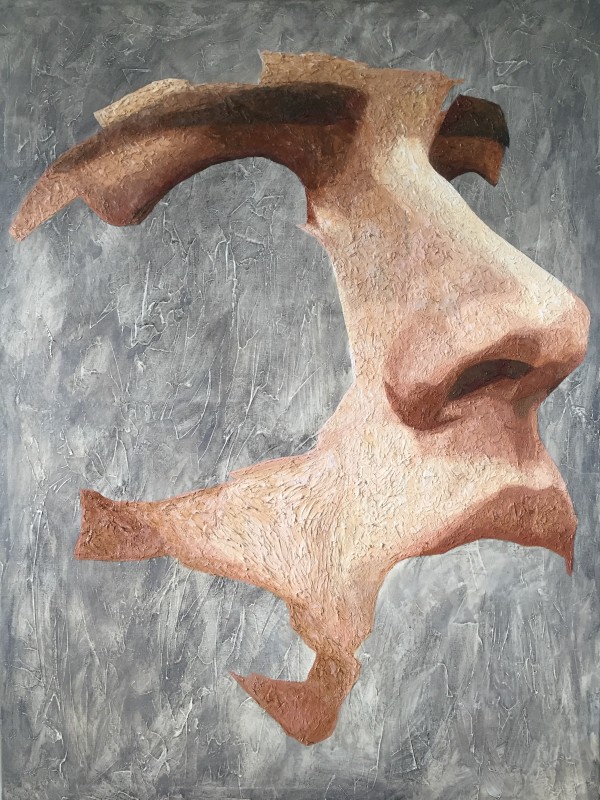
Fragment LII
“Fragment LII” – Oil on canvas, 100x75cm.
The Fragments series attempts, by the deconstruction of the portrait, to explore what lies beyond the physical and the individual, to discover what is essentially and universally human.
If we strip-away all that is unnecessary for our existence we would be left with nothing but the earth we stand on, and so the landscape is an integral part of this work. From the textures of rock and bark and the restricted palette of earth colours, to the vigorous technique of scraping the painted and sculpted surface with sandpaper and knives calling to mind the processes of erosion and corrosion, these figures are inseparable from their environment.
I’m not a traditional portrait artist, I’m not trying to describe a certain person, rather I’m interested in humanity in general, therefore very few of my paintings and sculptures include eyes, which would immediately tie the work to an individual.
The portrait is further abstracted, sometimes with a sense of fluidity, examining the effect of motion on the face, other times in a geometric fashion, suggestive of the broken reclics of ancient civilisations. However, by ensuring that the subject has a sense of volume, weight and substance, I hope that what is revealed by deconstructing the portrait might be just as tangible.
The viewer is encouraged to look beyond the surface features, to continue the process of stripping-away the unnecessary and consider ideas of mental health, identity, spirituality, the soul and our connection with the earth. The fragmentation of the portrait is sometimes uncomfortable because it deals with the fragility of existence.
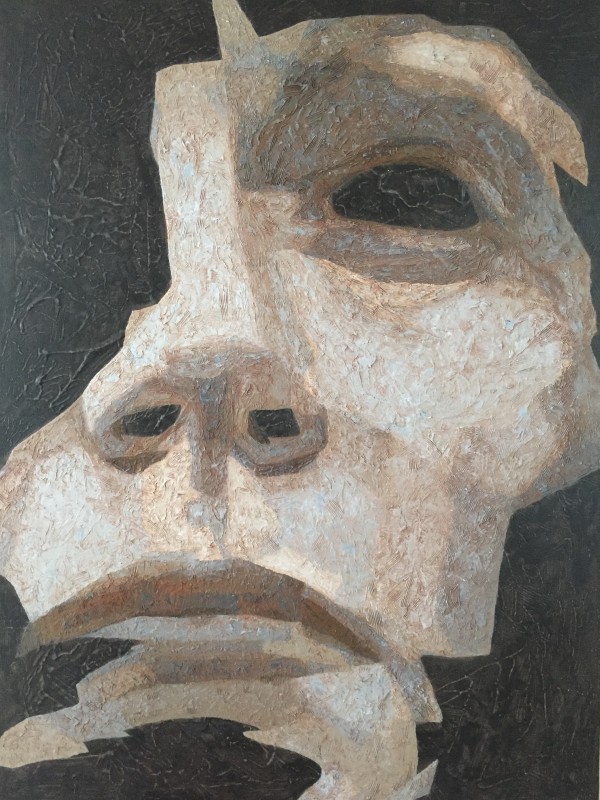
Fragment L
“Fragment L” – Oil on canvas, 100x75cm.
The Fragments series attempts, by the deconstruction of the portrait, to explore what lies beyond the physical and the individual, to discover what is essentially and universally human.
If we strip-away all that is unnecessary for our existence we would be left with nothing but the earth we stand on, and so the landscape is an integral part of this work. From the textures of rock and bark and the restricted palette of earth colours, to the vigorous technique of scraping the painted and sculpted surface with sandpaper and knives calling to mind the processes of erosion and corrosion, these figures are inseparable from their environment.
I’m not a traditional portrait artist, I’m not trying to describe a certain person, rather I’m interested in humanity in general, therefore very few of my paintings and sculptures include eyes, which would immediately tie the work to an individual.
The portrait is further abstracted, sometimes with a sense of fluidity, examining the effect of motion on the face, other times in a geometric fashion, suggestive of the broken reclics of ancient civilisations. However, by ensuring that the subject has a sense of volume, weight and substance, I hope that what is revealed by deconstructing the portrait might be just as tangible.
The viewer is encouraged to look beyond the surface features, to continue the process of stripping-away the unnecessary and consider ideas of mental health, identity, spirituality, the soul and our connection with the earth. The fragmentation of the portrait is sometimes uncomfortable because it deals with the fragility of existence.
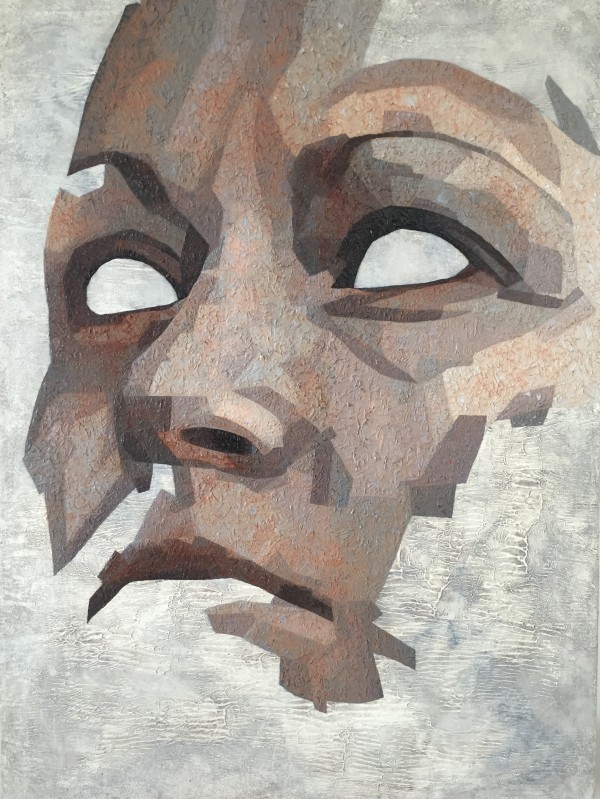
Fragment XLIX
“Fragment XLIX” – Oil on canvas, 100x75cm.
The Fragments series attempts, by the deconstruction of the portrait, to explore what lies beyond the physical and the individual, to discover what is essentially and universally human.
If we strip-away all that is unnecessary for our existence we would be left with nothing but the earth we stand on, and so the landscape is an integral part of this work. From the textures of rock and bark and the restricted palette of earth colours, to the vigorous technique of scraping the painted and sculpted surface with sandpaper and knives calling to mind the processes of erosion and corrosion, these figures are inseparable from their environment.
I’m not a traditional portrait artist, I’m not trying to describe a certain person, rather I’m interested in humanity in general, therefore very few of my paintings and sculptures include eyes, which would immediately tie the work to an individual.
The portrait is further abstracted, sometimes with a sense of fluidity, examining the effect of motion on the face, other times in a geometric fashion, suggestive of the broken reclics of ancient civilisations. However, by ensuring that the subject has a sense of volume, weight and substance, I hope that what is revealed by deconstructing the portrait might be just as tangible.
The viewer is encouraged to look beyond the surface features, to continue the process of stripping-away the unnecessary and consider ideas of mental health, identity, spirituality, the soul and our connection with the earth. The fragmentation of the portrait is sometimes uncomfortable because it deals with the fragility of existence.
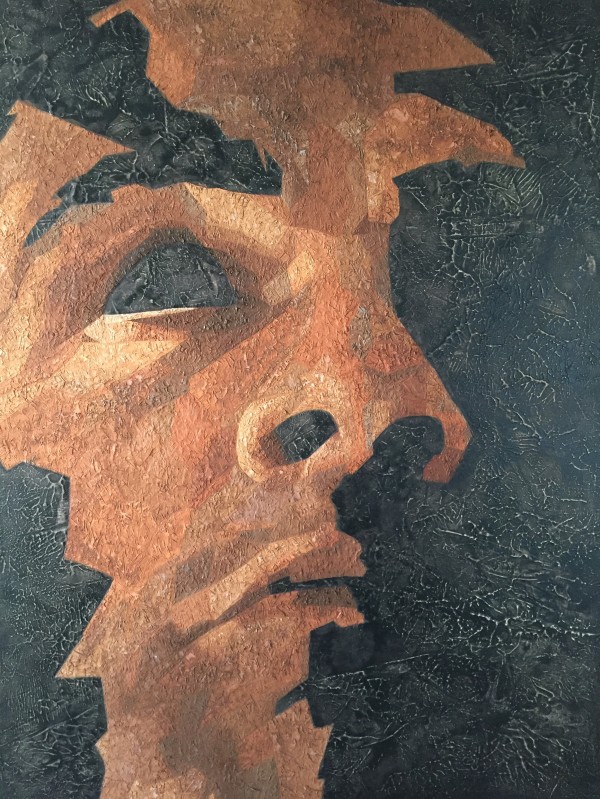
Fragment XLVIII
“Fragment XLVIII” – Oil on canvas, 100x75cm.
The Fragments series attempts, by the deconstruction of the portrait, to explore what lies beyond the physical and the individual, to discover what is essentially and universally human.
If we strip-away all that is unnecessary for our existence we would be left with nothing but the earth we stand on, and so the landscape is an integral part of this work. From the textures of rock and bark and the restricted palette of earth colours, to the vigorous technique of scraping the painted and sculpted surface with sandpaper and knives calling to mind the processes of erosion and corrosion, these figures are inseparable from their environment.
I’m not a traditional portrait artist, I’m not trying to describe a certain person, rather I’m interested in humanity in general, therefore very few of my paintings and sculptures include eyes, which would immediately tie the work to an individual.
The portrait is further abstracted, sometimes with a sense of fluidity, examining the effect of motion on the face, other times in a geometric fashion, suggestive of the broken reclics of ancient civilisations. However, by ensuring that the subject has a sense of volume, weight and substance, I hope that what is revealed by deconstructing the portrait might be just as tangible.
The viewer is encouraged to look beyond the surface features, to continue the process of stripping-away the unnecessary and consider ideas of mental health, identity, spirituality, the soul and our connection with the earth. The fragmentation of the portrait is sometimes uncomfortable because it deals with the fragility of existence.
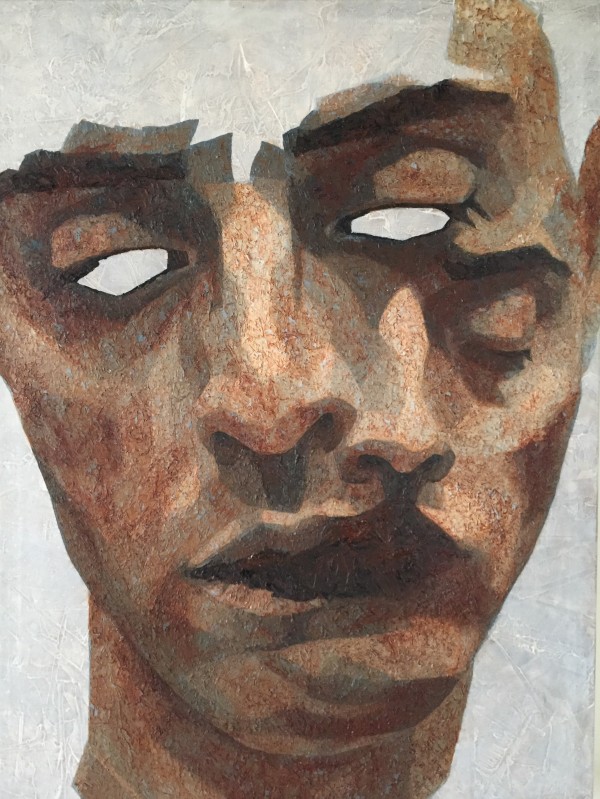
Fragment XLVII
“Fragment XLVII” – Oil on canvas, 100x75cm.
The Fragments series attempts, by the deconstruction of the portrait, to explore what lies beyond the physical and the individual, to discover what is essentially and universally human.
If we strip-away all that is unnecessary for our existence we would be left with nothing but the earth we stand on, and so the landscape is an integral part of this work. From the textures of rock and bark and the restricted palette of earth colours, to the vigorous technique of scraping the painted and sculpted surface with sandpaper and knives calling to mind the processes of erosion and corrosion, these figures are inseparable from their environment.
I’m not a traditional portrait artist, I’m not trying to describe a certain person, rather I’m interested in humanity in general, therefore very few of my paintings and sculptures include eyes, which would immediately tie the work to an individual.
The portrait is further abstracted, sometimes with a sense of fluidity, examining the effect of motion on the face, other times in a geometric fashion, suggestive of the broken reclics of ancient civilisations. However, by ensuring that the subject has a sense of volume, weight and substance, I hope that what is revealed by deconstructing the portrait might be just as tangible.
The viewer is encouraged to look beyond the surface features, to continue the process of stripping-away the unnecessary and consider ideas of mental health, identity, spirituality, the soul and our connection with the earth. The fragmentation of the portrait is sometimes uncomfortable because it deals with the fragility of existence.
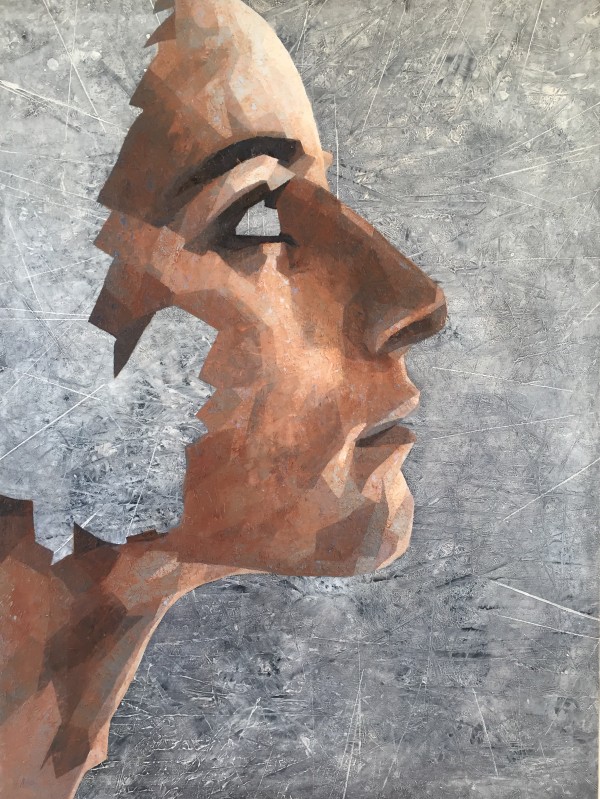
Fragment XLVI
“Fragment XLVI” – Oil on canvas, 100x75cm.
The Fragments series attempts, by the deconstruction of the portrait, to explore what lies beyond the physical and the individual, to discover what is essentially and universally human.
If we strip-away all that is unnecessary for our existence we would be left with nothing but the earth we stand on, and so the landscape is an integral part of this work. From the textures of rock and bark and the restricted palette of earth colours, to the vigorous technique of scraping the painted and sculpted surface with sandpaper and knives calling to mind the processes of erosion and corrosion, these figures are inseparable from their environment.
I’m not a traditional portrait artist, I’m not trying to describe a certain person, rather I’m interested in humanity in general, therefore very few of my paintings and sculptures include eyes, which would immediately tie the work to an individual.
The portrait is further abstracted, sometimes with a sense of fluidity, examining the effect of motion on the face, other times in a geometric fashion, suggestive of the broken reclics of ancient civilisations. However, by ensuring that the subject has a sense of volume, weight and substance, I hope that what is revealed by deconstructing the portrait might be just as tangible.
The viewer is encouraged to look beyond the surface features, to continue the process of stripping-away the unnecessary and consider ideas of mental health, identity, spirituality, the soul and our connection with the earth. The fragmentation of the portrait is sometimes uncomfortable because it deals with the fragility of existence.
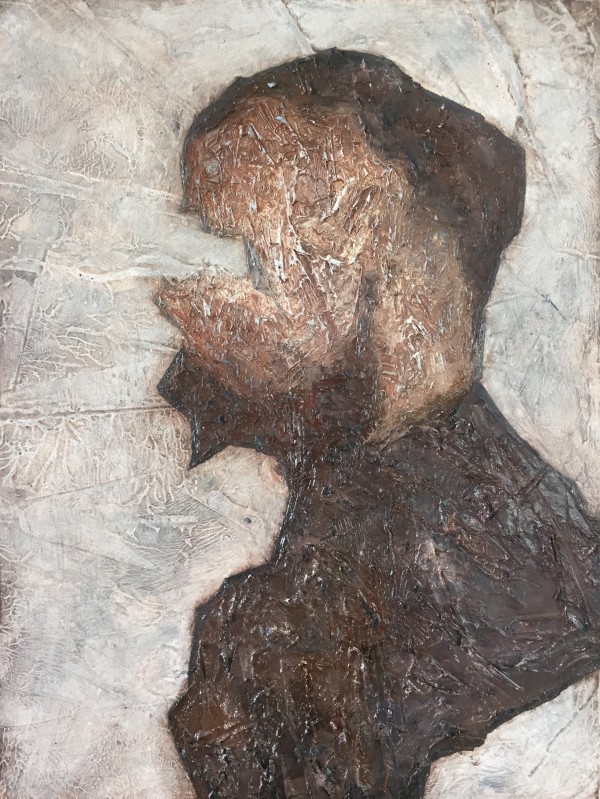
Fragment XLII
“Fragment XLII” – Oil on board, 40x30cm.
The Fragments series attempts, by the deconstruction of the portrait, to explore what lies beyond the physical and the individual, to discover what is essentially and universally human.
If we strip-away all that is unnecessary for our existence we would be left with nothing but the earth we stand on, and so the landscape is an integral part of this work. From the textures of rock and bark and the restricted palette of earth colours, to the vigorous technique of scraping the painted and sculpted surface with sandpaper and knives calling to mind the processes of erosion and corrosion, these figures are inseparable from their environment.
I’m not a traditional portrait artist, I’m not trying to describe a certain person, rather I’m interested in humanity in general, therefore very few of my paintings and sculptures include eyes, which would immediately tie the work to an individual.
The portrait is further abstracted, sometimes with a sense of fluidity, examining the effect of motion on the face, other times in a geometric fashion, suggestive of the broken reclics of ancient civilisations. However, by ensuring that the subject has a sense of volume, weight and substance, I hope that what is revealed by deconstructing the portrait might be just as tangible.
The viewer is encouraged to look beyond the surface features, to continue the process of stripping-away the unnecessary and consider ideas of mental health, identity, spirituality, the soul and our connection with the earth. The fragmentation of the portrait is sometimes uncomfortable because it deals with the fragility of existence.
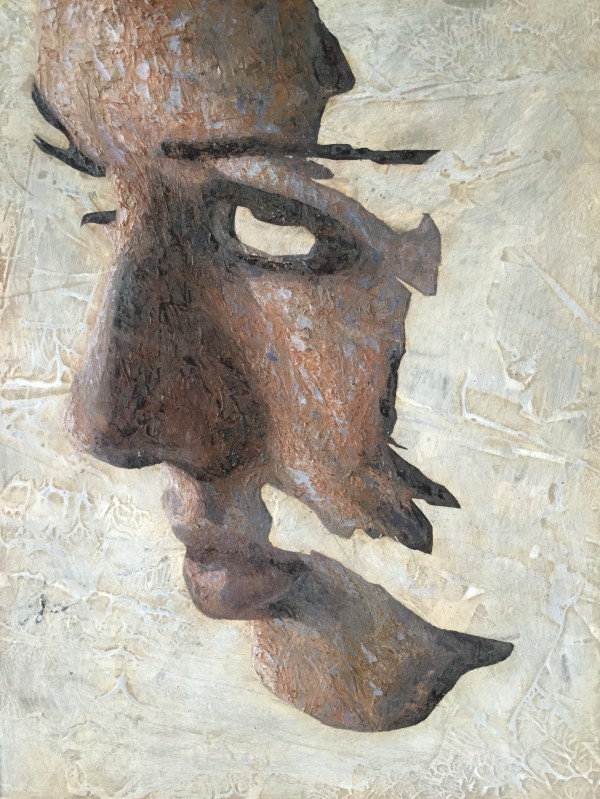
Fragment XL
“Fragment XL” – Oil on board, 40x30cm.
The Fragments series attempts, by the deconstruction of the portrait, to explore what lies beyond the physical and the individual, to discover what is essentially and universally human.
If we strip-away all that is unnecessary for our existence we would be left with nothing but the earth we stand on, and so the landscape is an integral part of this work. From the textures of rock and bark and the restricted palette of earth colours, to the vigorous technique of scraping the painted and sculpted surface with sandpaper and knives calling to mind the processes of erosion and corrosion, these figures are inseparable from their environment.
I’m not a traditional portrait artist, I’m not trying to describe a certain person, rather I’m interested in humanity in general, therefore very few of my paintings and sculptures include eyes, which would immediately tie the work to an individual.
The portrait is further abstracted, sometimes with a sense of fluidity, examining the effect of motion on the face, other times in a geometric fashion, suggestive of the broken reclics of ancient civilisations. However, by ensuring that the subject has a sense of volume, weight and substance, I hope that what is revealed by deconstructing the portrait might be just as tangible.
The viewer is encouraged to look beyond the surface features, to continue the process of stripping-away the unnecessary and consider ideas of mental health, identity, spirituality, the soul and our connection with the earth. The fragmentation of the portrait is sometimes uncomfortable because it deals with the fragility of existence.
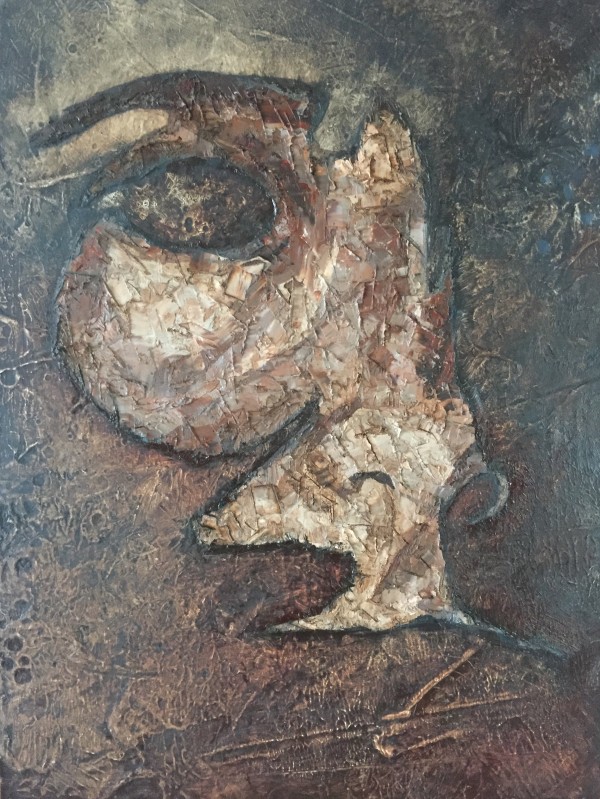
Fragment XXXIX
“Fragment XXXIX” – Oil on board, 40x30cm.
The Fragments series attempts, by the deconstruction of the portrait, to explore what lies beyond the physical and the individual, to discover what is essentially and universally human.
If we strip-away all that is unnecessary for our existence we would be left with nothing but the earth we stand on, and so the landscape is an integral part of this work. From the textures of rock and bark and the restricted palette of earth colours, to the vigorous technique of scraping the painted and sculpted surface with sandpaper and knives calling to mind the processes of erosion and corrosion, these figures are inseparable from their environment.
I’m not a traditional portrait artist, I’m not trying to describe a certain person, rather I’m interested in humanity in general, therefore very few of my paintings and sculptures include eyes, which would immediately tie the work to an individual.
The portrait is further abstracted, sometimes with a sense of fluidity, examining the effect of motion on the face, other times in a geometric fashion, suggestive of the broken reclics of ancient civilisations. However, by ensuring that the subject has a sense of volume, weight and substance, I hope that what is revealed by deconstructing the portrait might be just as tangible.
The viewer is encouraged to look beyond the surface features, to continue the process of stripping-away the unnecessary and consider ideas of mental health, identity, spirituality, the soul and our connection with the earth. The fragmentation of the portrait is sometimes uncomfortable because it deals with the fragility of existence.

Fragment XXXVIII
“Fragment XXXVIII” – Oil on board, 40x30cm.
The Fragments series attempts, by the deconstruction of the portrait, to explore what lies beyond the physical and the individual, to discover what is essentially and universally human.
If we strip-away all that is unnecessary for our existence we would be left with nothing but the earth we stand on, and so the landscape is an integral part of this work. From the textures of rock and bark and the restricted palette of earth colours, to the vigorous technique of scraping the painted and sculpted surface with sandpaper and knives calling to mind the processes of erosion and corrosion, these figures are inseparable from their environment.
I’m not a traditional portrait artist, I’m not trying to describe a certain person, rather I’m interested in humanity in general, therefore very few of my paintings and sculptures include eyes, which would immediately tie the work to an individual.
The portrait is further abstracted, sometimes with a sense of fluidity, examining the effect of motion on the face, other times in a geometric fashion, suggestive of the broken reclics of ancient civilisations. However, by ensuring that the subject has a sense of volume, weight and substance, I hope that what is revealed by deconstructing the portrait might be just as tangible.
The viewer is encouraged to look beyond the surface features, to continue the process of stripping-away the unnecessary and consider ideas of mental health, identity, spirituality, the soul and our connection with the earth. The fragmentation of the portrait is sometimes uncomfortable because it deals with the fragility of existence.
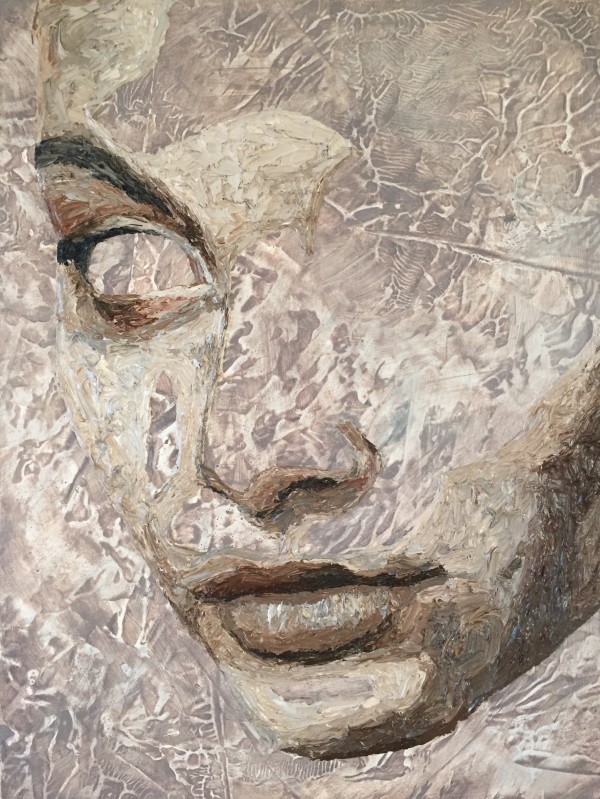
Fragment XXXIV
“Fragment XXXIV” – Oil on board, 40x30cm.
The Fragments series attempts, by the deconstruction of the portrait, to explore what lies beyond the physical and the individual, to discover what is essentially and universally human.
If we strip-away all that is unnecessary for our existence we would be left with nothing but the earth we stand on, and so the landscape is an integral part of this work. From the textures of rock and bark and the restricted palette of earth colours, to the vigorous technique of scraping the painted and sculpted surface with sandpaper and knives calling to mind the processes of erosion and corrosion, these figures are inseparable from their environment.
I’m not a traditional portrait artist, I’m not trying to describe a certain person, rather I’m interested in humanity in general, therefore very few of my paintings and sculptures include eyes, which would immediately tie the work to an individual.
The portrait is further abstracted, sometimes with a sense of fluidity, examining the effect of motion on the face, other times in a geometric fashion, suggestive of the broken reclics of ancient civilisations. However, by ensuring that the subject has a sense of volume, weight and substance, I hope that what is revealed by deconstructing the portrait might be just as tangible.
The viewer is encouraged to look beyond the surface features, to continue the process of stripping-away the unnecessary and consider ideas of mental health, identity, spirituality, the soul and our connection with the earth. The fragmentation of the portrait is sometimes uncomfortable because it deals with the fragility of existence.
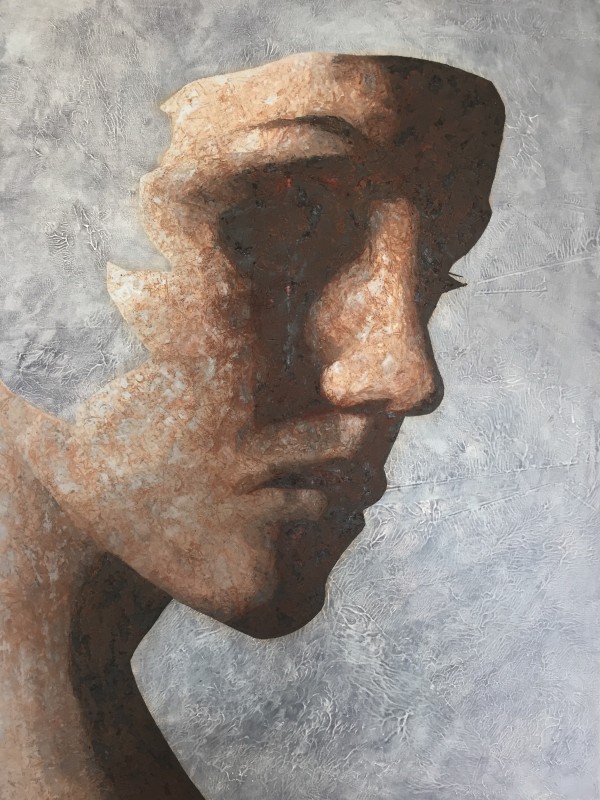
Fragment XXXIII
“Fragment XXXIII” – Oil on canvas, 100x75cm.
The Fragments series attempts, by the deconstruction of the portrait, to explore what lies beyond the physical and the individual, to discover what is essentially and universally human.
If we strip-away all that is unnecessary for our existence we would be left with nothing but the earth we stand on, and so the landscape is an integral part of this work. From the textures of rock and bark and the restricted palette of earth colours, to the vigorous technique of scraping the painted and sculpted surface with sandpaper and knives calling to mind the processes of erosion and corrosion, these figures are inseparable from their environment.
I’m not a traditional portrait artist, I’m not trying to describe a certain person, rather I’m interested in humanity in general, therefore very few of my paintings and sculptures include eyes, which would immediately tie the work to an individual.
The portrait is further abstracted, sometimes with a sense of fluidity, examining the effect of motion on the face, other times in a geometric fashion, suggestive of the broken reclics of ancient civilisations. However, by ensuring that the subject has a sense of volume, weight and substance, I hope that what is revealed by deconstructing the portrait might be just as tangible.
The viewer is encouraged to look beyond the surface features, to continue the process of stripping-away the unnecessary and consider ideas of mental health, identity, spirituality, the soul and our connection with the earth. The fragmentation of the portrait is sometimes uncomfortable because it deals with the fragility of existence.
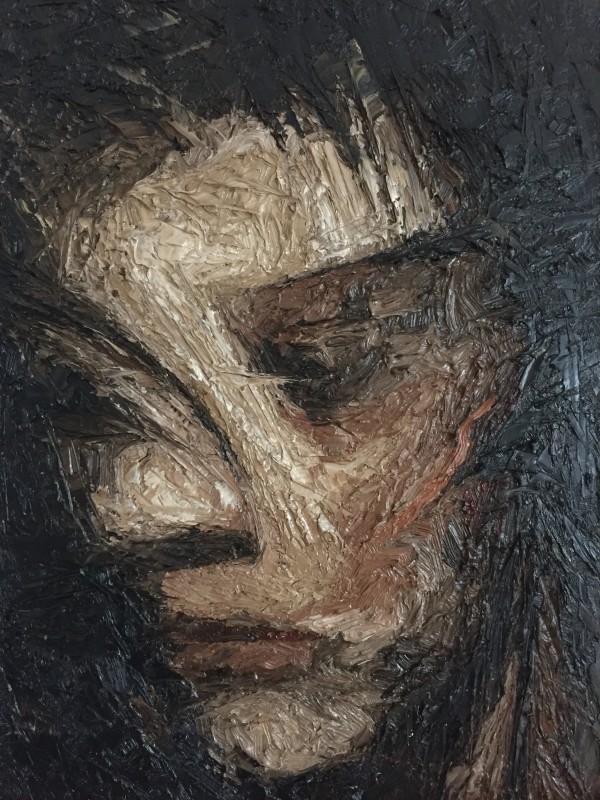
Fragment XXXII
“Fragment XXXII” – Oil on board, 40x30cm.
The Fragments series attempts, by the deconstruction of the portrait, to explore what lies beyond the physical and the individual, to discover what is essentially and universally human.
If we strip-away all that is unnecessary for our existence we would be left with nothing but the earth we stand on, and so the landscape is an integral part of this work. From the textures of rock and bark and the restricted palette of earth colours, to the vigorous technique of scraping the painted and sculpted surface with sandpaper and knives calling to mind the processes of erosion and corrosion, these figures are inseparable from their environment.
I’m not a traditional portrait artist, I’m not trying to describe a certain person, rather I’m interested in humanity in general, therefore very few of my paintings and sculptures include eyes, which would immediately tie the work to an individual.
The portrait is further abstracted, sometimes with a sense of fluidity, examining the effect of motion on the face, other times in a geometric fashion, suggestive of the broken reclics of ancient civilisations. However, by ensuring that the subject has a sense of volume, weight and substance, I hope that what is revealed by deconstructing the portrait might be just as tangible.
The viewer is encouraged to look beyond the surface features, to continue the process of stripping-away the unnecessary and consider ideas of mental health, identity, spirituality, the soul and our connection with the earth. The fragmentation of the portrait is sometimes uncomfortable because it deals with the fragility of existence.
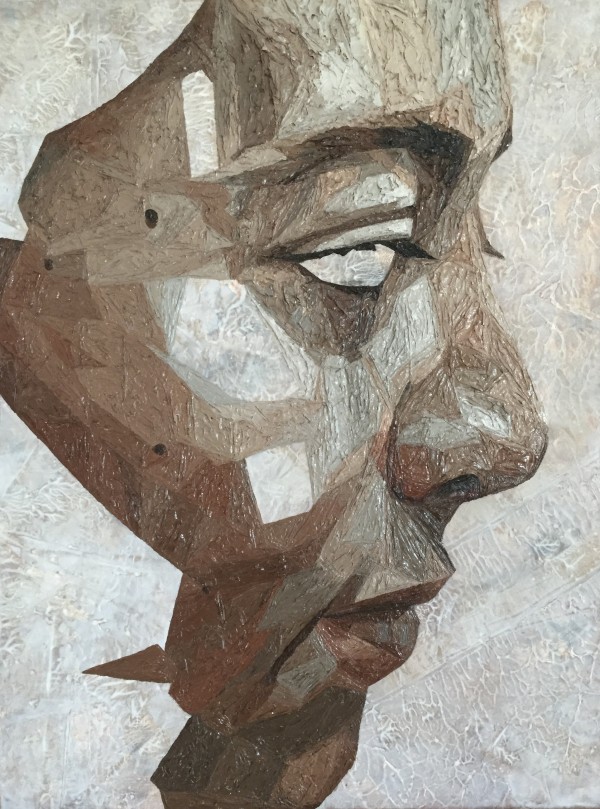
Fragment XXXI
“Fragment XXXI” – Oil on board, 40x30cm.
The Fragments series attempts, by the deconstruction of the portrait, to explore what lies beyond the physical and the individual, to discover what is essentially and universally human.
If we strip-away all that is unnecessary for our existence we would be left with nothing but the earth we stand on, and so the landscape is an integral part of this work. From the textures of rock and bark and the restricted palette of earth colours, to the vigorous technique of scraping the painted and sculpted surface with sandpaper and knives calling to mind the processes of erosion and corrosion, these figures are inseparable from their environment.
I’m not a traditional portrait artist, I’m not trying to describe a certain person, rather I’m interested in humanity in general, therefore very few of my paintings and sculptures include eyes, which would immediately tie the work to an individual.
The portrait is further abstracted, sometimes with a sense of fluidity, examining the effect of motion on the face, other times in a geometric fashion, suggestive of the broken reclics of ancient civilisations. However, by ensuring that the subject has a sense of volume, weight and substance, I hope that what is revealed by deconstructing the portrait might be just as tangible.
The viewer is encouraged to look beyond the surface features, to continue the process of stripping-away the unnecessary and consider ideas of mental health, identity, spirituality, the soul and our connection with the earth. The fragmentation of the portrait is sometimes uncomfortable because it deals with the fragility of existence.
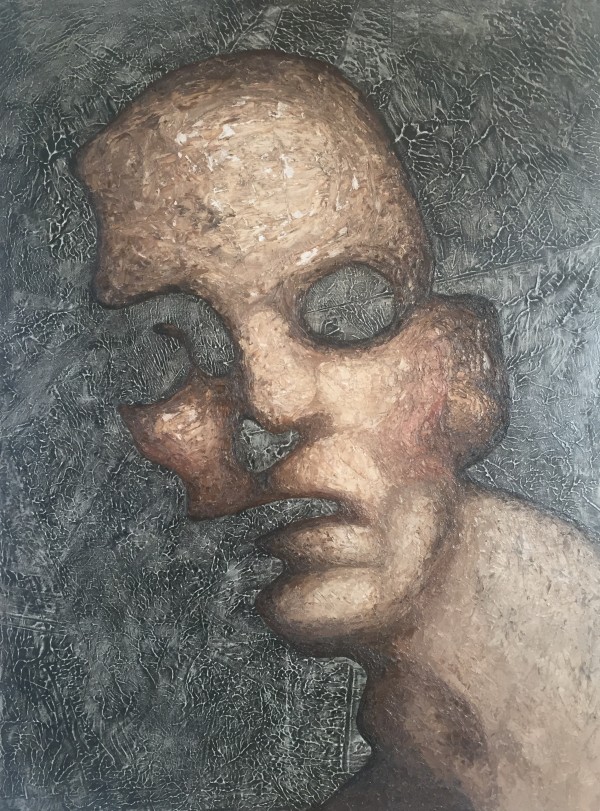
Fragment XXX
“Fragment XXX” – Oil on canvas, 100x75cm.
The Fragments series attempts, by the deconstruction of the portrait, to explore what lies beyond the physical and the individual, to discover what is essentially and universally human.
If we strip-away all that is unnecessary for our existence we would be left with nothing but the earth we stand on, and so the landscape is an integral part of this work. From the textures of rock and bark and the restricted palette of earth colours, to the vigorous technique of scraping the painted and sculpted surface with sandpaper and knives calling to mind the processes of erosion and corrosion, these figures are inseparable from their environment.
I’m not a traditional portrait artist, I’m not trying to describe a certain person, rather I’m interested in humanity in general, therefore very few of my paintings and sculptures include eyes, which would immediately tie the work to an individual.
The portrait is further abstracted, sometimes with a sense of fluidity, examining the effect of motion on the face, other times in a geometric fashion, suggestive of the broken reclics of ancient civilisations. However, by ensuring that the subject has a sense of volume, weight and substance, I hope that what is revealed by deconstructing the portrait might be just as tangible.
The viewer is encouraged to look beyond the surface features, to continue the process of stripping-away the unnecessary and consider ideas of mental health, identity, spirituality, the soul and our connection with the earth. The fragmentation of the portrait is sometimes uncomfortable because it deals with the fragility of existence.
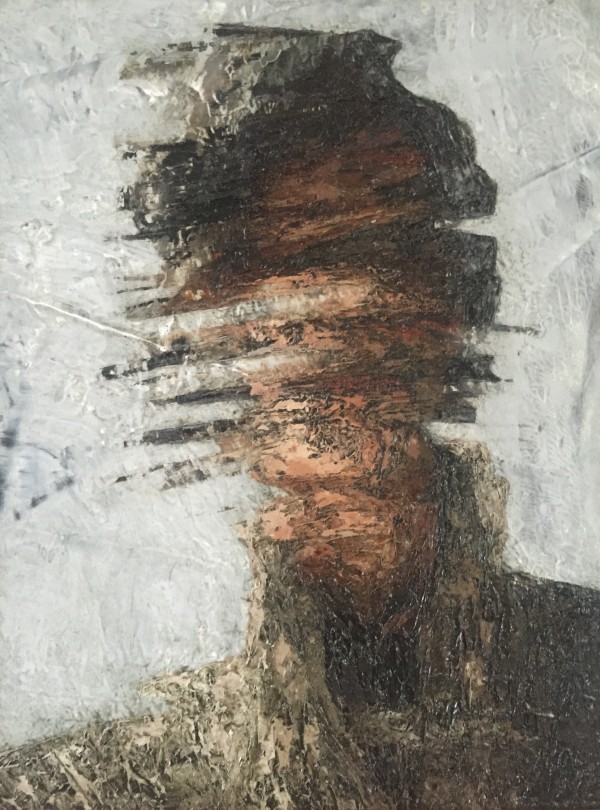
Fragment XXIX
“Fragment XXIX” – Oil on board, 40x30cm.
The Fragments series attempts, by the deconstruction of the portrait, to explore what lies beyond the physical and the individual, to discover what is essentially and universally human.
If we strip-away all that is unnecessary for our existence we would be left with nothing but the earth we stand on, and so the landscape is an integral part of this work. From the textures of rock and bark and the restricted palette of earth colours, to the vigorous technique of scraping the painted and sculpted surface with sandpaper and knives calling to mind the processes of erosion and corrosion, these figures are inseparable from their environment.
I’m not a traditional portrait artist, I’m not trying to describe a certain person, rather I’m interested in humanity in general, therefore very few of my paintings and sculptures include eyes, which would immediately tie the work to an individual.
The portrait is further abstracted, sometimes with a sense of fluidity, examining the effect of motion on the face, other times in a geometric fashion, suggestive of the broken reclics of ancient civilisations. However, by ensuring that the subject has a sense of volume, weight and substance, I hope that what is revealed by deconstructing the portrait might be just as tangible.
The viewer is encouraged to look beyond the surface features, to continue the process of stripping-away the unnecessary and consider ideas of mental health, identity, spirituality, the soul and our connection with the earth. The fragmentation of the portrait is sometimes uncomfortable because it deals with the fragility of existence.
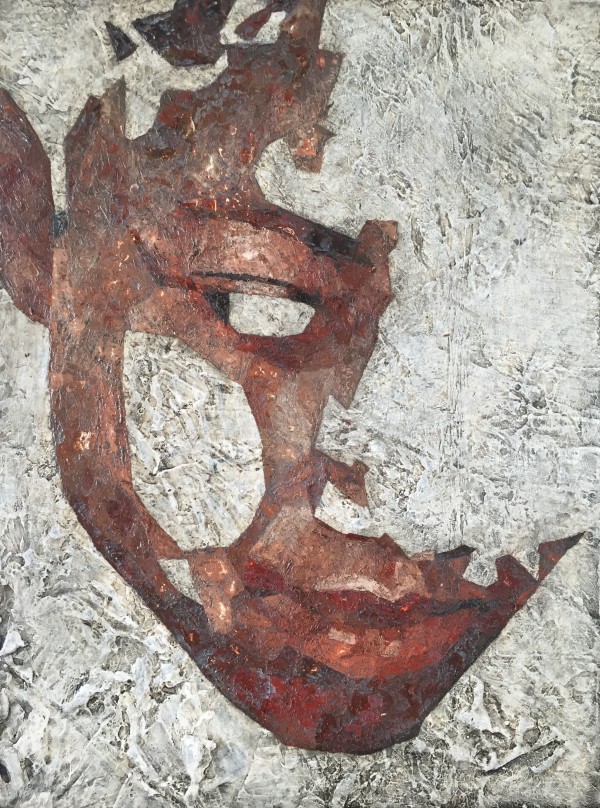
Fragment XXVIII
“Fragment XXVIII” – Oil on board, 40x30cm.
The Fragments series attempts, by the deconstruction of the portrait, to explore what lies beyond the physical and the individual, to discover what is essentially and universally human.
If we strip-away all that is unnecessary for our existence we would be left with nothing but the earth we stand on, and so the landscape is an integral part of this work. From the textures of rock and bark and the restricted palette of earth colours, to the vigorous technique of scraping the painted and sculpted surface with sandpaper and knives calling to mind the processes of erosion and corrosion, these figures are inseparable from their environment.
I’m not a traditional portrait artist, I’m not trying to describe a certain person, rather I’m interested in humanity in general, therefore very few of my paintings and sculptures include eyes, which would immediately tie the work to an individual.
The portrait is further abstracted, sometimes with a sense of fluidity, examining the effect of motion on the face, other times in a geometric fashion, suggestive of the broken reclics of ancient civilisations. However, by ensuring that the subject has a sense of volume, weight and substance, I hope that what is revealed by deconstructing the portrait might be just as tangible.
The viewer is encouraged to look beyond the surface features, to continue the process of stripping-away the unnecessary and consider ideas of mental health, identity, spirituality, the soul and our connection with the earth. The fragmentation of the portrait is sometimes uncomfortable because it deals with the fragility of existence.
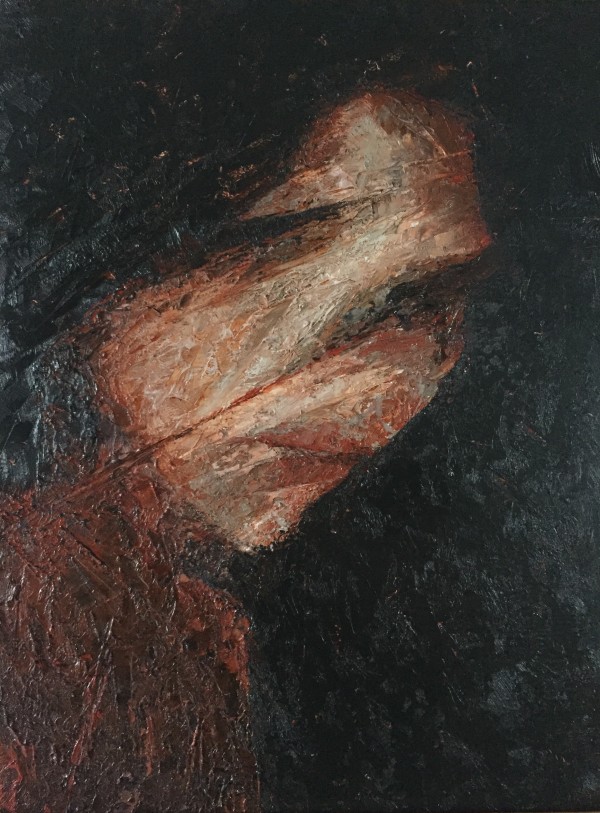
Fragment XXVII
“Fragment XXVII” – Oil on board, 40x30cm.
The Fragments series attempts, by the deconstruction of the portrait, to explore what lies beyond the physical and the individual, to discover what is essentially and universally human.
If we strip-away all that is unnecessary for our existence we would be left with nothing but the earth we stand on, and so the landscape is an integral part of this work. From the textures of rock and bark and the restricted palette of earth colours, to the vigorous technique of scraping the painted and sculpted surface with sandpaper and knives calling to mind the processes of erosion and corrosion, these figures are inseparable from their environment.
I’m not a traditional portrait artist, I’m not trying to describe a certain person, rather I’m interested in humanity in general, therefore very few of my paintings and sculptures include eyes, which would immediately tie the work to an individual.
The portrait is further abstracted, sometimes with a sense of fluidity, examining the effect of motion on the face, other times in a geometric fashion, suggestive of the broken reclics of ancient civilisations. However, by ensuring that the subject has a sense of volume, weight and substance, I hope that what is revealed by deconstructing the portrait might be just as tangible.
The viewer is encouraged to look beyond the surface features, to continue the process of stripping-away the unnecessary and consider ideas of mental health, identity, spirituality, the soul and our connection with the earth. The fragmentation of the portrait is sometimes uncomfortable because it deals with the fragility of existence.

Fragment XXVI
“Fragment XXVI” – Oil on board, 40x30cm.
The Fragments series attempts, by the deconstruction of the portrait, to explore what lies beyond the physical and the individual, to discover what is essentially and universally human.
If we strip-away all that is unnecessary for our existence we would be left with nothing but the earth we stand on, and so the landscape is an integral part of this work. From the textures of rock and bark and the restricted palette of earth colours, to the vigorous technique of scraping the painted and sculpted surface with sandpaper and knives calling to mind the processes of erosion and corrosion, these figures are inseparable from their environment.
I’m not a traditional portrait artist, I’m not trying to describe a certain person, rather I’m interested in humanity in general, therefore very few of my paintings and sculptures include eyes, which would immediately tie the work to an individual.
The portrait is further abstracted, sometimes with a sense of fluidity, examining the effect of motion on the face, other times in a geometric fashion, suggestive of the broken reclics of ancient civilisations. However, by ensuring that the subject has a sense of volume, weight and substance, I hope that what is revealed by deconstructing the portrait might be just as tangible.
The viewer is encouraged to look beyond the surface features, to continue the process of stripping-away the unnecessary and consider ideas of mental health, identity, spirituality, the soul and our connection with the earth. The fragmentation of the portrait is sometimes uncomfortable because it deals with the fragility of existence.

Fragment XXIV
“Fragment XXIV” – Oil on board, 40x30cm.
The Fragments series attempts, by the deconstruction of the portrait, to explore what lies beyond the physical and the individual, to discover what is essentially and universally human.
If we strip-away all that is unnecessary for our existence we would be left with nothing but the earth we stand on, and so the landscape is an integral part of this work. From the textures of rock and bark and the restricted palette of earth colours, to the vigorous technique of scraping the painted and sculpted surface with sandpaper and knives calling to mind the processes of erosion and corrosion, these figures are inseparable from their environment.
I’m not a traditional portrait artist, I’m not trying to describe a certain person, rather I’m interested in humanity in general, therefore very few of my paintings and sculptures include eyes, which would immediately tie the work to an individual.
The portrait is further abstracted, sometimes with a sense of fluidity, examining the effect of motion on the face, other times in a geometric fashion, suggestive of the broken reclics of ancient civilisations. However, by ensuring that the subject has a sense of volume, weight and substance, I hope that what is revealed by deconstructing the portrait might be just as tangible.
The viewer is encouraged to look beyond the surface features, to continue the process of stripping-away the unnecessary and consider ideas of mental health, identity, spirituality, the soul and our connection with the earth. The fragmentation of the portrait is sometimes uncomfortable because it deals with the fragility of existence.
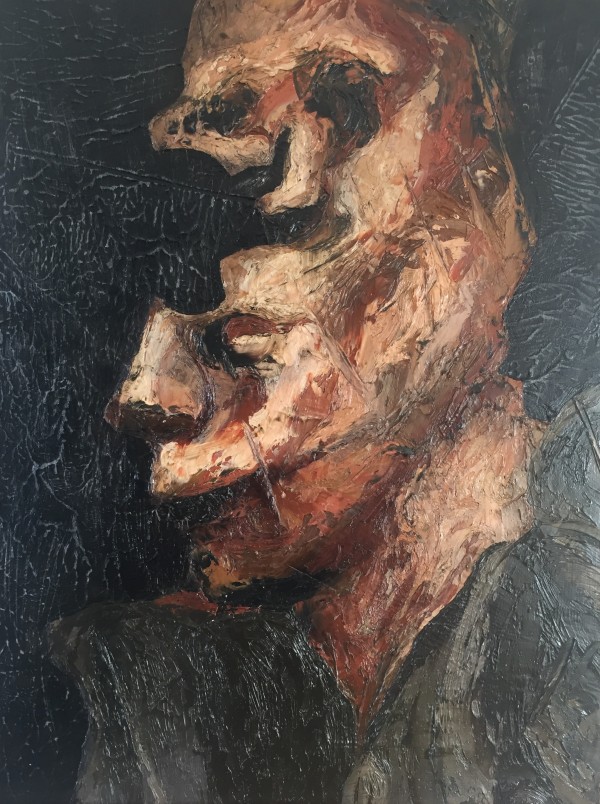
Fragment XXI
“Fragment XXI” – Oil on board, 40x30cm.
The Fragments series attempts, by the deconstruction of the portrait, to explore what lies beyond the physical and the individual, to discover what is essentially and universally human.
If we strip-away all that is unnecessary for our existence we would be left with nothing but the earth we stand on, and so the landscape is an integral part of this work. From the textures of rock and bark and the restricted palette of earth colours, to the vigorous technique of scraping the painted and sculpted surface with sandpaper and knives calling to mind the processes of erosion and corrosion, these figures are inseparable from their environment.
I’m not a traditional portrait artist, I’m not trying to describe a certain person, rather I’m interested in humanity in general, therefore very few of my paintings and sculptures include eyes, which would immediately tie the work to an individual.
The portrait is further abstracted, sometimes with a sense of fluidity, examining the effect of motion on the face, other times in a geometric fashion, suggestive of the broken reclics of ancient civilisations. However, by ensuring that the subject has a sense of volume, weight and substance, I hope that what is revealed by deconstructing the portrait might be just as tangible.
The viewer is encouraged to look beyond the surface features, to continue the process of stripping-away the unnecessary and consider ideas of mental health, identity, spirituality, the soul and our connection with the earth. The fragmentation of the portrait is sometimes uncomfortable because it deals with the fragility of existence.
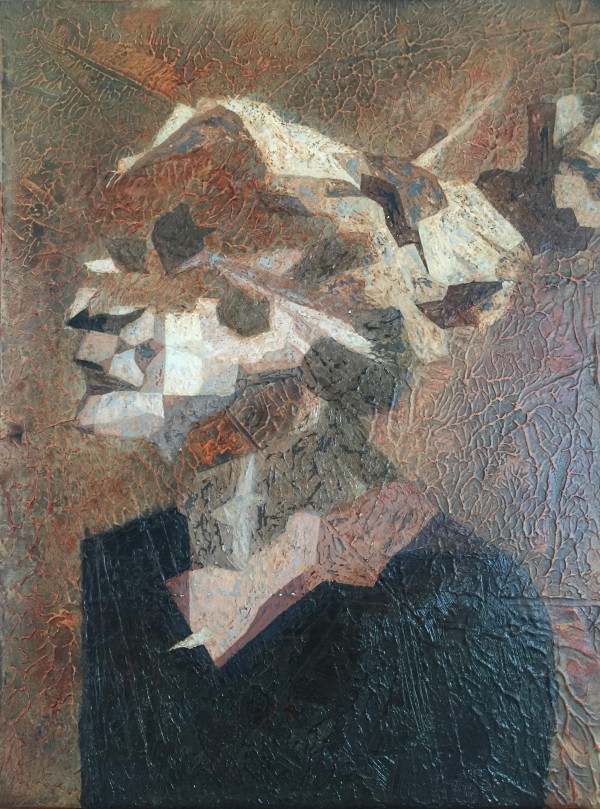
Fragment XIX
“Fragment XIX” – Oil on board, 40x30cm.
The Fragments series attempts, by the deconstruction of the portrait, to explore what lies beyond the physical and the individual, to discover what is essentially and universally human.
If we strip-away all that is unnecessary for our existence we would be left with nothing but the earth we stand on, and so the landscape is an integral part of this work. From the textures of rock and bark and the restricted palette of earth colours, to the vigorous technique of scraping the painted and sculpted surface with sandpaper and knives calling to mind the processes of erosion and corrosion, these figures are inseparable from their environment.
I’m not a traditional portrait artist, I’m not trying to describe a certain person, rather I’m interested in humanity in general, therefore very few of my paintings and sculptures include eyes, which would immediately tie the work to an individual.
The portrait is further abstracted, sometimes with a sense of fluidity, examining the effect of motion on the face, other times in a geometric fashion, suggestive of the broken reclics of ancient civilisations. However, by ensuring that the subject has a sense of volume, weight and substance, I hope that what is revealed by deconstructing the portrait might be just as tangible.
The viewer is encouraged to look beyond the surface features, to continue the process of stripping-away the unnecessary and consider ideas of mental health, identity, spirituality, the soul and our connection with the earth. The fragmentation of the portrait is sometimes uncomfortable because it deals with the fragility of existence.
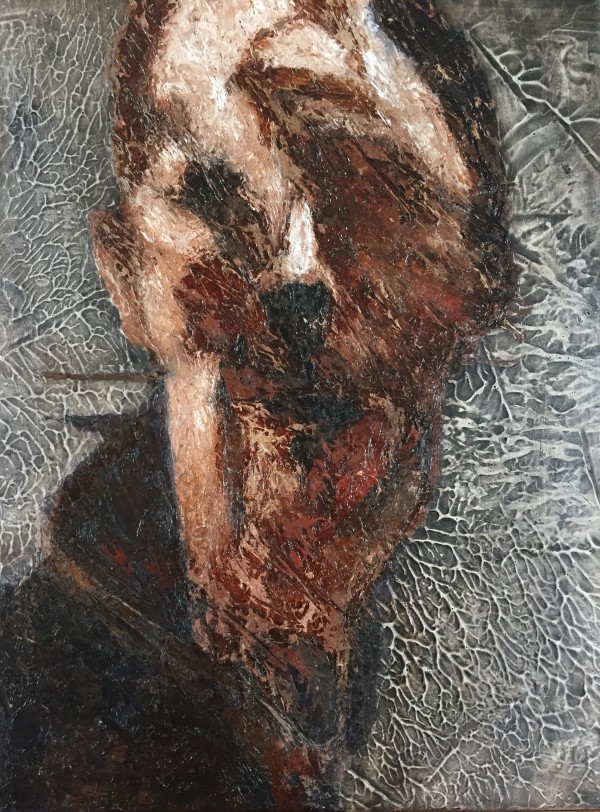
Fragment XVII
“Fragment XVII” – Oil on board, 40x30cm.
The Fragments series attempts, by the deconstruction of the portrait, to explore what lies beyond the physical and the individual, to discover what is essentially and universally human.
If we strip-away all that is unnecessary for our existence we would be left with nothing but the earth we stand on, and so the landscape is an integral part of this work. From the textures of rock and bark and the restricted palette of earth colours, to the vigorous technique of scraping the painted and sculpted surface with sandpaper and knives calling to mind the processes of erosion and corrosion, these figures are inseparable from their environment.
I’m not a traditional portrait artist, I’m not trying to describe a certain person, rather I’m interested in humanity in general, therefore very few of my paintings and sculptures include eyes, which would immediately tie the work to an individual.
The portrait is further abstracted, sometimes with a sense of fluidity, examining the effect of motion on the face, other times in a geometric fashion, suggestive of the broken reclics of ancient civilisations. However, by ensuring that the subject has a sense of volume, weight and substance, I hope that what is revealed by deconstructing the portrait might be just as tangible.
The viewer is encouraged to look beyond the surface features, to continue the process of stripping-away the unnecessary and consider ideas of mental health, identity, spirituality, the soul and our connection with the earth. The fragmentation of the portrait is sometimes uncomfortable because it deals with the fragility of existence.
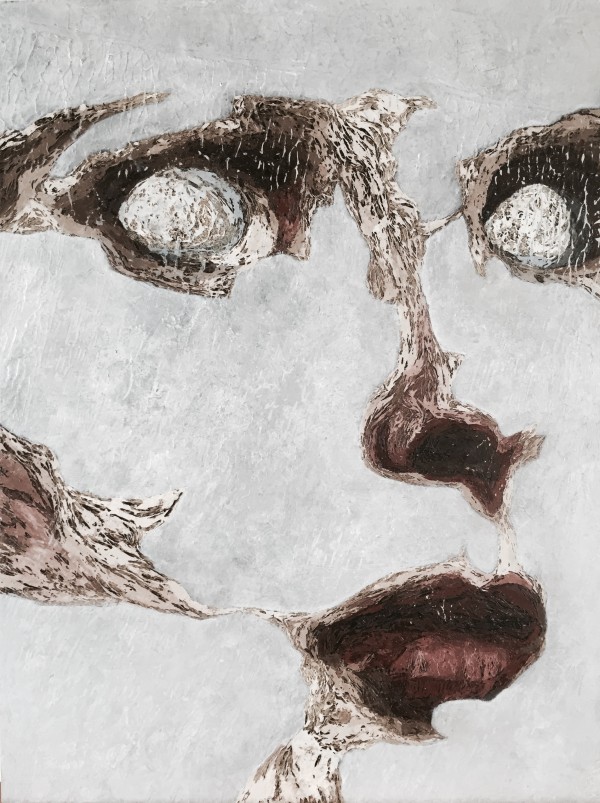
Fragment XV
“Fragment XV” – Oil on board, 40x30cm.
The Fragments series attempts, by the deconstruction of the portrait, to explore what lies beyond the physical and the individual, to discover what is essentially and universally human.
If we strip-away all that is unnecessary for our existence we would be left with nothing but the earth we stand on, and so the landscape is an integral part of this work. From the textures of rock and bark and the restricted palette of earth colours, to the vigorous technique of scraping the painted and sculpted surface with sandpaper and knives calling to mind the processes of erosion and corrosion, these figures are inseparable from their environment.
I’m not a traditional portrait artist, I’m not trying to describe a certain person, rather I’m interested in humanity in general, therefore very few of my paintings and sculptures include eyes, which would immediately tie the work to an individual.
The portrait is further abstracted, sometimes with a sense of fluidity, examining the effect of motion on the face, other times in a geometric fashion, suggestive of the broken reclics of ancient civilisations. However, by ensuring that the subject has a sense of volume, weight and substance, I hope that what is revealed by deconstructing the portrait might be just as tangible.
The viewer is encouraged to look beyond the surface features, to continue the process of stripping-away the unnecessary and consider ideas of mental health, identity, spirituality, the soul and our connection with the earth. The fragmentation of the portrait is sometimes uncomfortable because it deals with the fragility of existence.
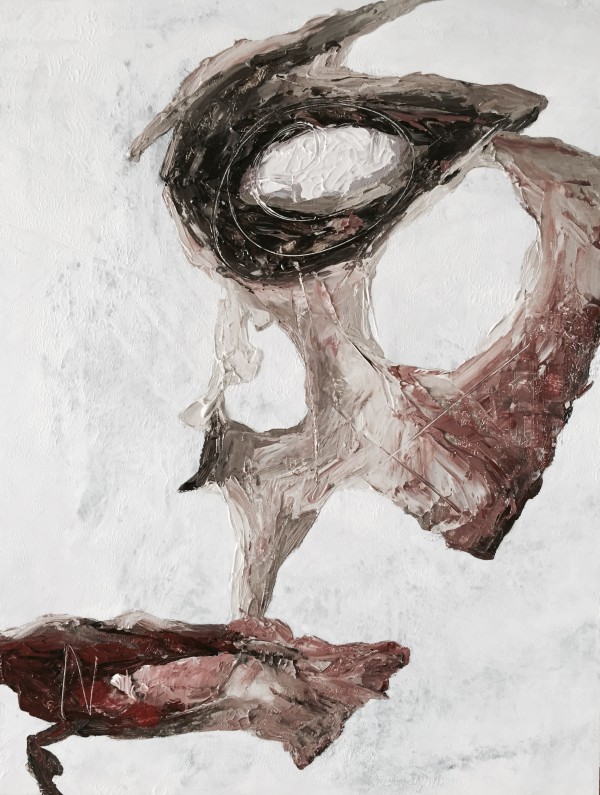
Fragment XIV
“Fragment XIV” – Acrylic on board, 40x30cm.
The Fragments series attempts, by the deconstruction of the portrait, to explore what lies beyond the physical and the individual, to discover what is essentially and universally human.
If we strip-away all that is unnecessary for our existence we would be left with nothing but the earth we stand on, and so the landscape is an integral part of this work. From the textures of rock and bark and the restricted palette of earth colours, to the vigorous technique of scraping the painted and sculpted surface with sandpaper and knives calling to mind the processes of erosion and corrosion, these figures are inseparable from their environment.
I’m not a traditional portrait artist, I’m not trying to describe a certain person, rather I’m interested in humanity in general, therefore very few of my paintings and sculptures include eyes, which would immediately tie the work to an individual.
The portrait is further abstracted, sometimes with a sense of fluidity, examining the effect of motion on the face, other times in a geometric fashion, suggestive of the broken reclics of ancient civilisations. However, by ensuring that the subject has a sense of volume, weight and substance, I hope that what is revealed by deconstructing the portrait might be just as tangible.
The viewer is encouraged to look beyond the surface features, to continue the process of stripping-away the unnecessary and consider ideas of mental health, identity, spirituality, the soul and our connection with the earth. The fragmentation of the portrait is sometimes uncomfortable because it deals with the fragility of existence.
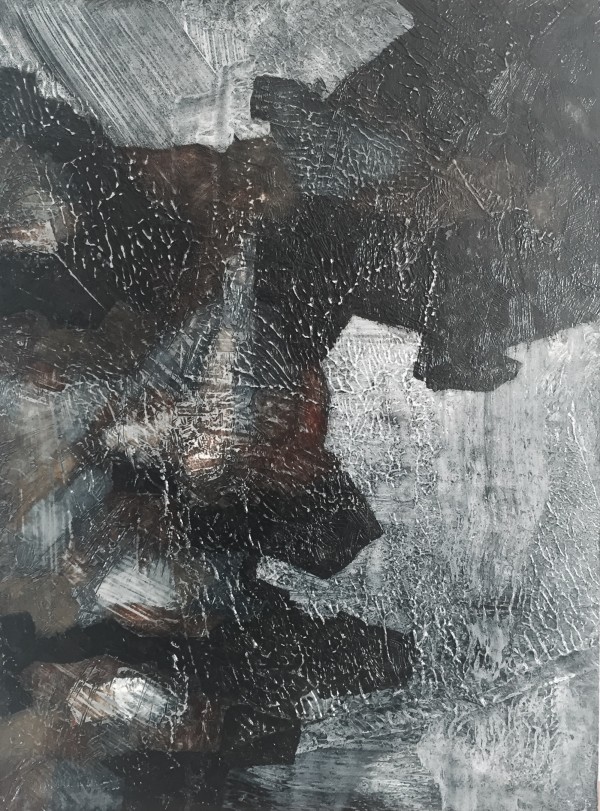
Fragment V
“Fragment V” – Oil on board, 40x30cm.
The Fragments series attempts, by the deconstruction of the portrait, to explore what lies beyond the physical and the individual, to discover what is essentially and universally human.
If we strip-away all that is unnecessary for our existence we would be left with nothing but the earth we stand on, and so the landscape is an integral part of this work. From the textures of rock and bark and the restricted palette of earth colours, to the vigorous technique of scraping the painted and sculpted surface with sandpaper and knives calling to mind the processes of erosion and corrosion, these figures are inseparable from their environment.
I’m not a traditional portrait artist, I’m not trying to describe a certain person, rather I’m interested in humanity in general, therefore very few of my paintings and sculptures include eyes, which would immediately tie the work to an individual.
The portrait is further abstracted, sometimes with a sense of fluidity, examining the effect of motion on the face, other times in a geometric fashion, suggestive of the broken reclics of ancient civilisations. However, by ensuring that the subject has a sense of volume, weight and substance, I hope that what is revealed by deconstructing the portrait might be just as tangible.
The viewer is encouraged to look beyond the surface features, to continue the process of stripping-away the unnecessary and consider ideas of mental health, identity, spirituality, the soul and our connection with the earth. The fragmentation of the portrait is sometimes uncomfortable because it deals with the fragility of existence.
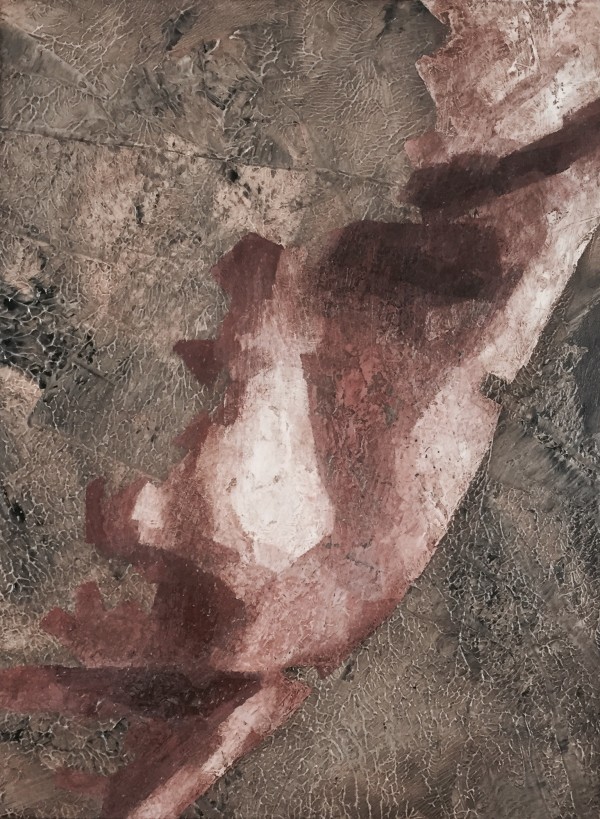
Fragment II
“Fragment II” – Oil on board, 40x30cm.
The Fragments series attempts, by the deconstruction of the portrait, to explore what lies beyond the physical and the individual, to discover what is essentially and universally human.
If we strip-away all that is unnecessary for our existence we would be left with nothing but the earth we stand on, and so the landscape is an integral part of this work. From the textures of rock and bark and the restricted palette of earth colours, to the vigorous technique of scraping the painted and sculpted surface with sandpaper and knives calling to mind the processes of erosion and corrosion, these figures are inseparable from their environment.
I’m not a traditional portrait artist, I’m not trying to describe a certain person, rather I’m interested in humanity in general, therefore very few of my paintings and sculptures include eyes, which would immediately tie the work to an individual.
The portrait is further abstracted, sometimes with a sense of fluidity, examining the effect of motion on the face, other times in a geometric fashion, suggestive of the broken reclics of ancient civilisations. However, by ensuring that the subject has a sense of volume, weight and substance, I hope that what is revealed by deconstructing the portrait might be just as tangible.
The viewer is encouraged to look beyond the surface features, to continue the process of stripping-away the unnecessary and consider ideas of mental health, identity, spirituality, the soul and our connection with the earth. The fragmentation of the portrait is sometimes uncomfortable because it deals with the fragility of existence.
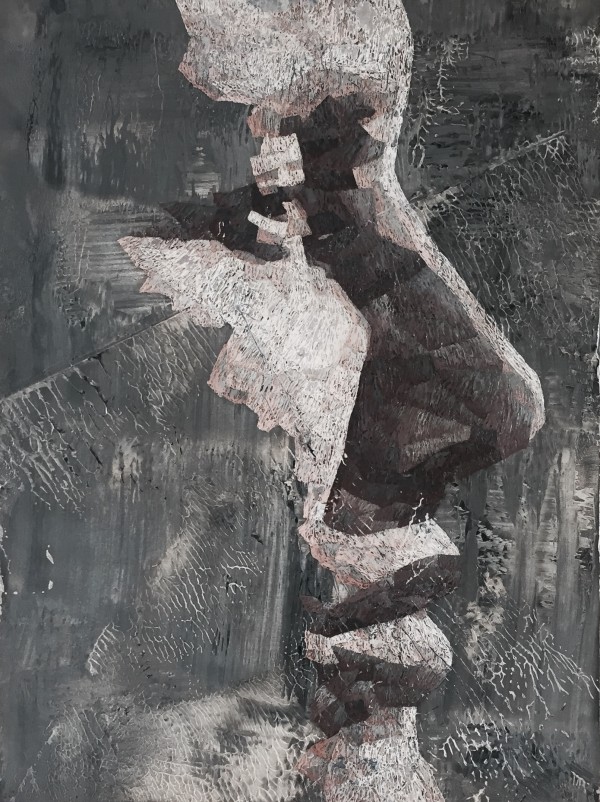
Fragment I
“Fragment I” – Oil on board, 40x30cm.
The Fragments series attempts, by the deconstruction of the portrait, to explore what lies beyond the physical and the individual, to discover what is essentially and universally human.
If we strip-away all that is unnecessary for our existence we would be left with nothing but the earth we stand on, and so the landscape is an integral part of this work. From the textures of rock and bark and the restricted palette of earth colours, to the vigorous technique of scraping the painted and sculpted surface with sandpaper and knives calling to mind the processes of erosion and corrosion, these figures are inseparable from their environment.
I’m not a traditional portrait artist, I’m not trying to describe a certain person, rather I’m interested in humanity in general, therefore very few of my paintings and sculptures include eyes, which would immediately tie the work to an individual.
The portrait is further abstracted, sometimes with a sense of fluidity, examining the effect of motion on the face, other times in a geometric fashion, suggestive of the broken reclics of ancient civilisations. However, by ensuring that the subject has a sense of volume, weight and substance, I hope that what is revealed by deconstructing the portrait might be just as tangible.
The viewer is encouraged to look beyond the surface features, to continue the process of stripping-away the unnecessary and consider ideas of mental health, identity, spirituality, the soul and our connection with the earth. The fragmentation of the portrait is sometimes uncomfortable because it deals with the fragility of existence.